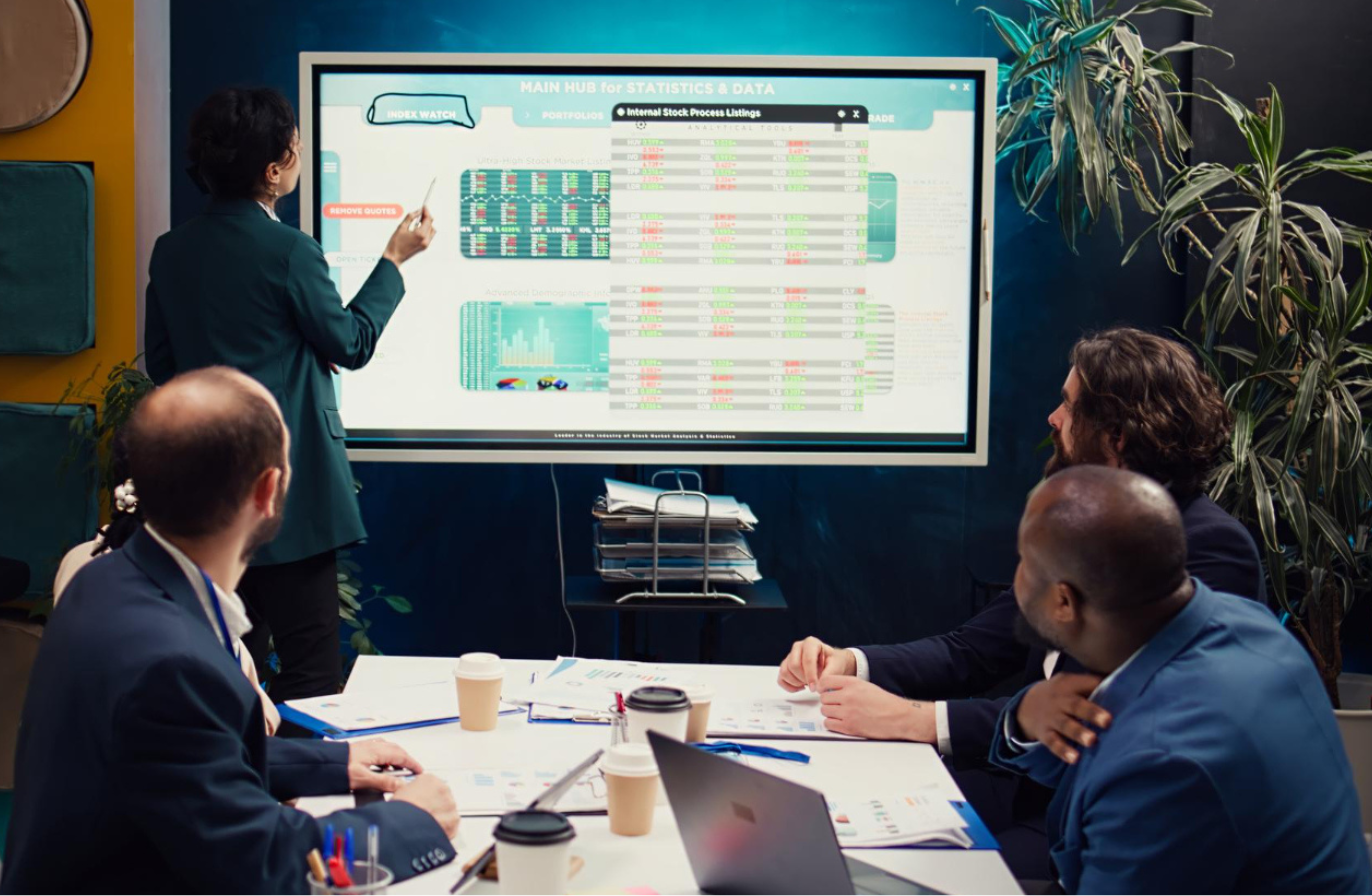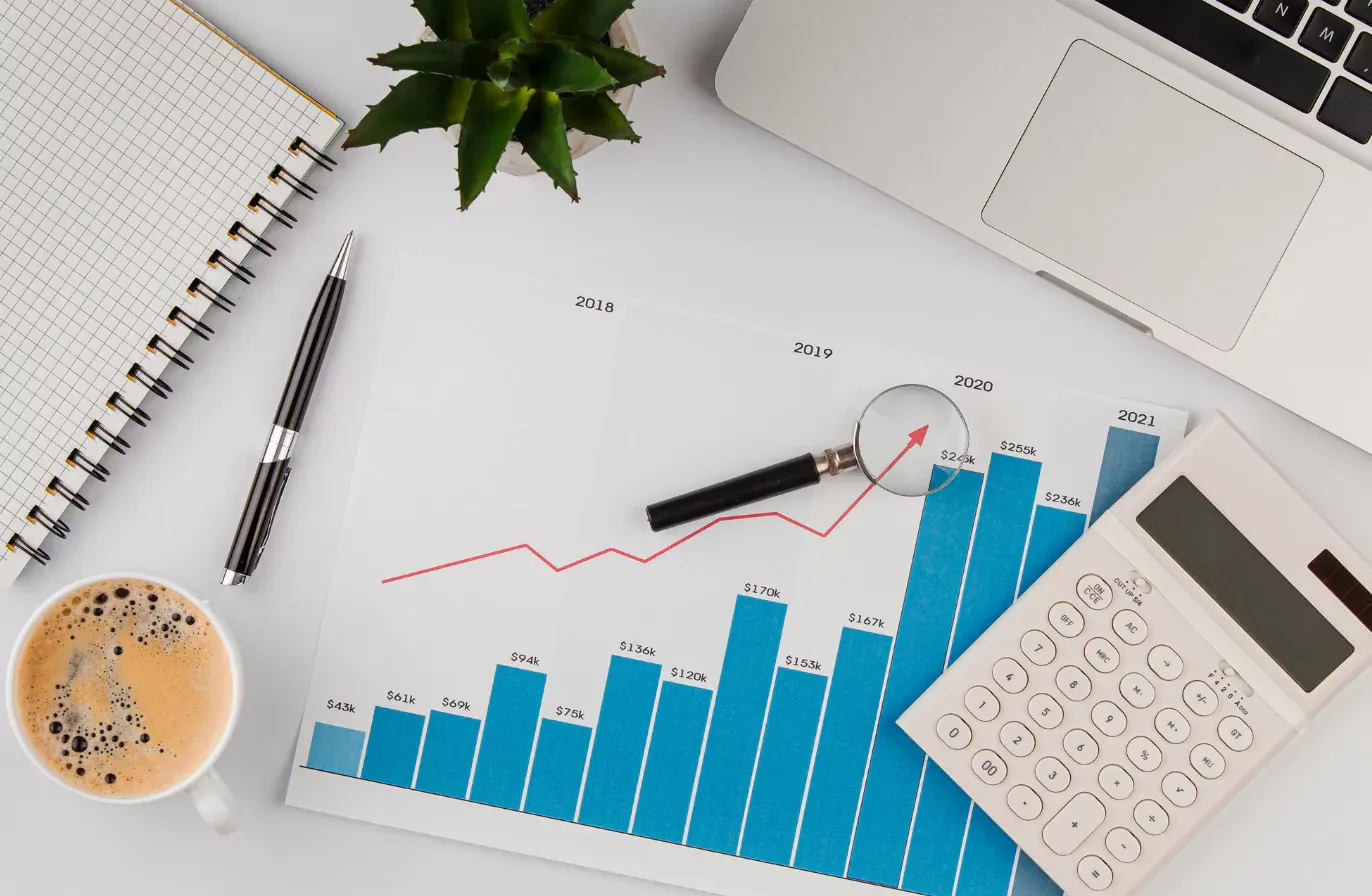How to Do An Instagram Competitor Analysis - A Detailed Guide
Learn how to conduct a detailed Instagram competitor analysis and discover a series of tools that will help you run one smoothly.

There are over 2 million businesses on Instagram. And for good reason. According to Meta’s survey, 79% of people have purchased a product or service after watching Instagram Reels.
But with so many businesses fighting for the same audience, how do you stand out?
The easiest way to do this is to run an Instagram competitor analysis. It will give you insights on how to shape your Instagram marketing strategy and come out as the winner.
In this article, I’ll give you the exact steps on how we run our Instagram competitor analysis, what data to include in a competitive analysis for Instagram, along with some tools you can use to get a quick start.
Key takeaways
-
How to find your competitors on Instagram? Discover competitors through hashtags, suggested accounts, influencer partnerships, and cross-platform searches.
-
Key metrics to track while conducting Instagram competitive analysis: Track engagement, growth data, and content performance metrics to see how your brand stacks up.
-
How to do an Instagram competitor analysis in 6 steps: Define your goals and scope, analyze content themes and formats, study audience engagement, track partnerships, benchmark performance, and turn insights into actionable strategies.
-
Best tools for Instagram competitor analysis: Leverage tools like Socialinsider, Mentionlytics, and Phlanx to save time and uncover deeper competitor insights.
What does a competitor analysis on Instagram mean?
An Instagram competitor analysis is the process of studying your competitors’ strategies, strengths, and weaknesses to understand how your own performance compares and how you can gain a competitive edge.
This competitor analysis uses data such as engagement metrics, posting frequency, campaign effectiveness, content performance, and audience growth to help guide and optimize your Instagram strategies.
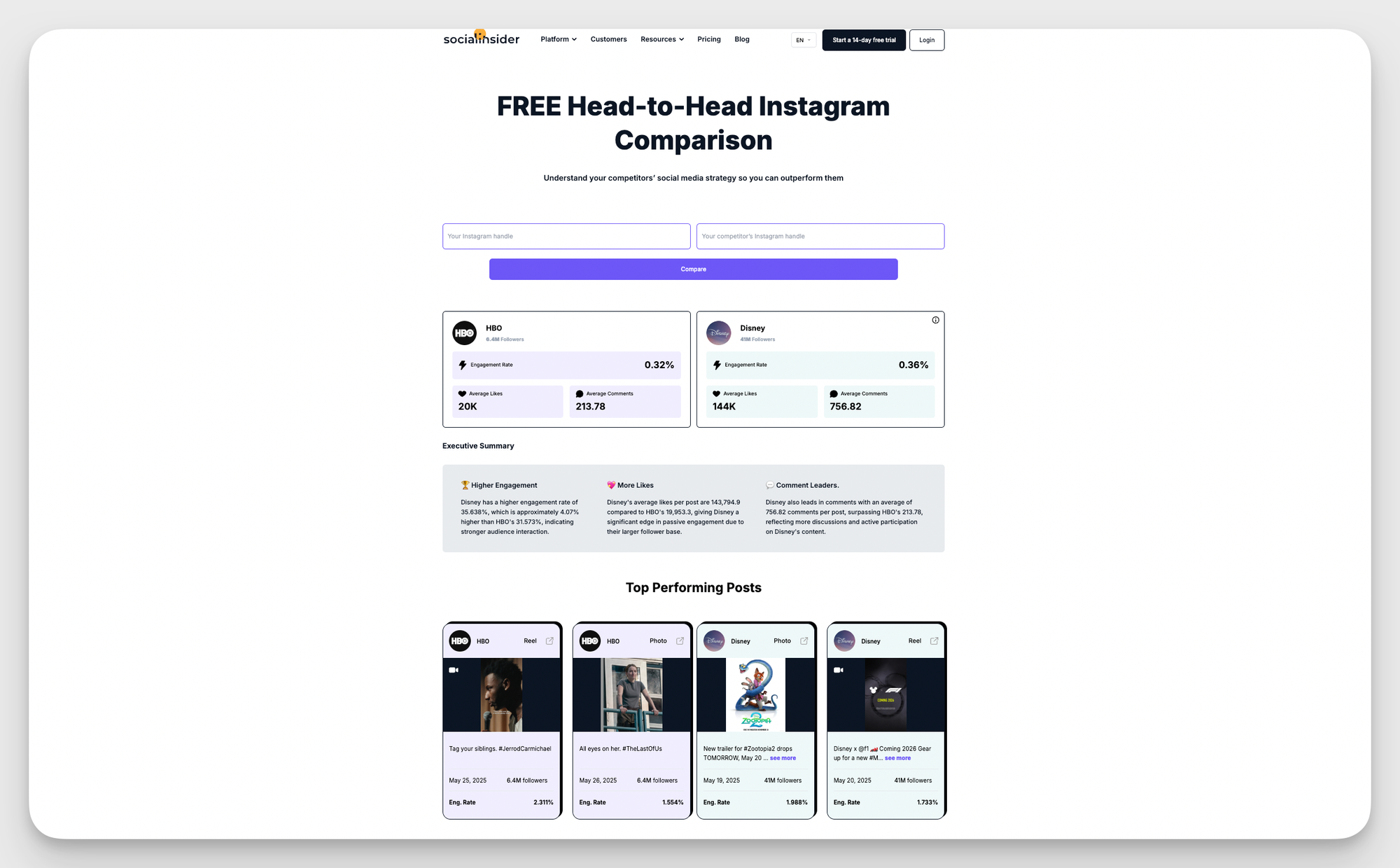
Why run a competitor analysis on Instagram?
Whether you’re running campaigns for clients or leading social strategy in-house, an Instagram competitive analysis uncovers insights you’d likely miss on your own.
Here are five reasons why I recommend analyzing your competitors.
Benchmark performance
Your engagement is up. Your followers are increasing. That’s great.
But how do these numbers compare to your competitors? Benchmarking helps you see if your 5% engagement rate is truly strong, or if your competitors are pulling in double.
By looking at your metrics side by side with competitors, you can spot where you’re leading the race and where you’re falling behind.
Gather fresh content ideas
The more content you consume, the more ideas you’ll have for your own content. That does not necessarily mean copying a competitor’s content. By analyzing the type of posts, Reels, or Stories that perform well for them, you can spot patterns, trends, and formats that resonate with your shared audience.
For example, Duolingo has a unique way of showing its customer success stories. With quirky animations and breaking the story into interesting tidbits in a carousel, they get storytelling right.
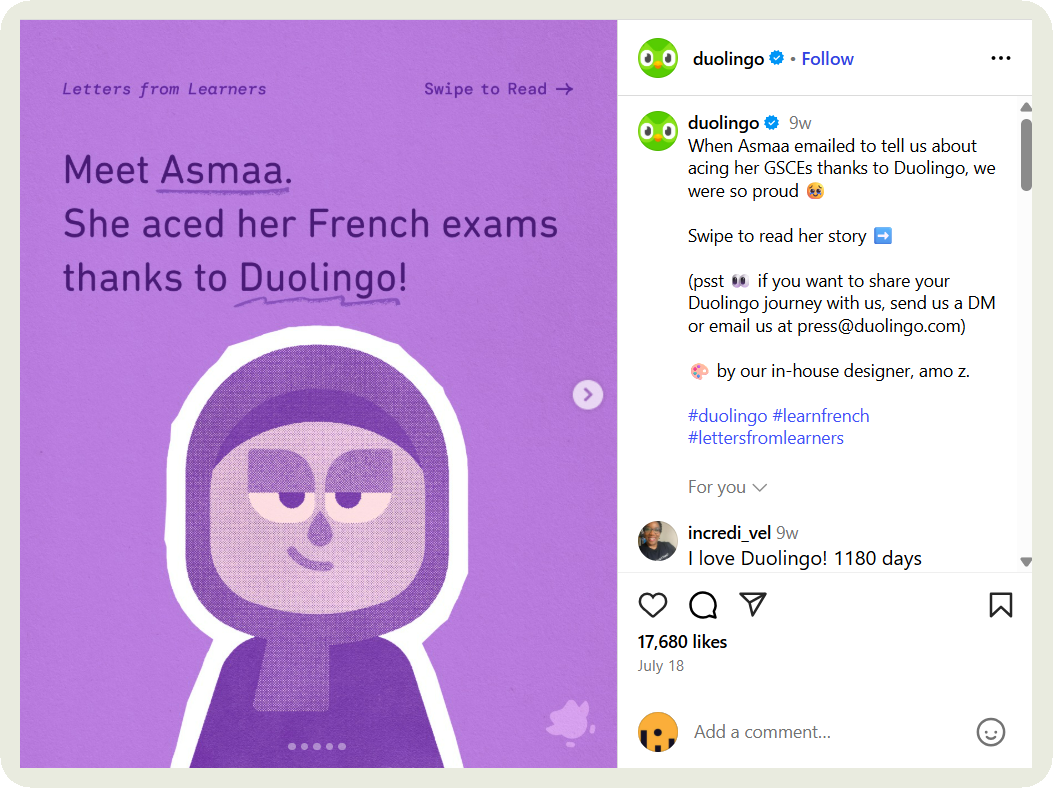
You can put your spin on this content or use this technique to support your product content.
Learn about target audience preferences
Your competitors are basically running audience experiments for you. Every Reel they post, Story they share, and carousel they test is a data point on what your shared audience engages with or ignores.
Notice their followers blowing up polls and Q&As? That’s your cue to get interactive. See tutorials outperforming glossy product shots? Time to lean into education.
Reveal collaboration and partnership patterns
Ever wondered which influencers or collaborators will give you the ROI you want? I ask myself the same thing. And guess what? The answer is hidden in plain sight. Your competitors’ feeds are full of clues. Every influencer tag, every co-branded giveaway, every takeover shows me the partnerships that are moving the needle for them.
For example, looking at Canva’s feed, I can clearly see that they partner with social strategists frequently.
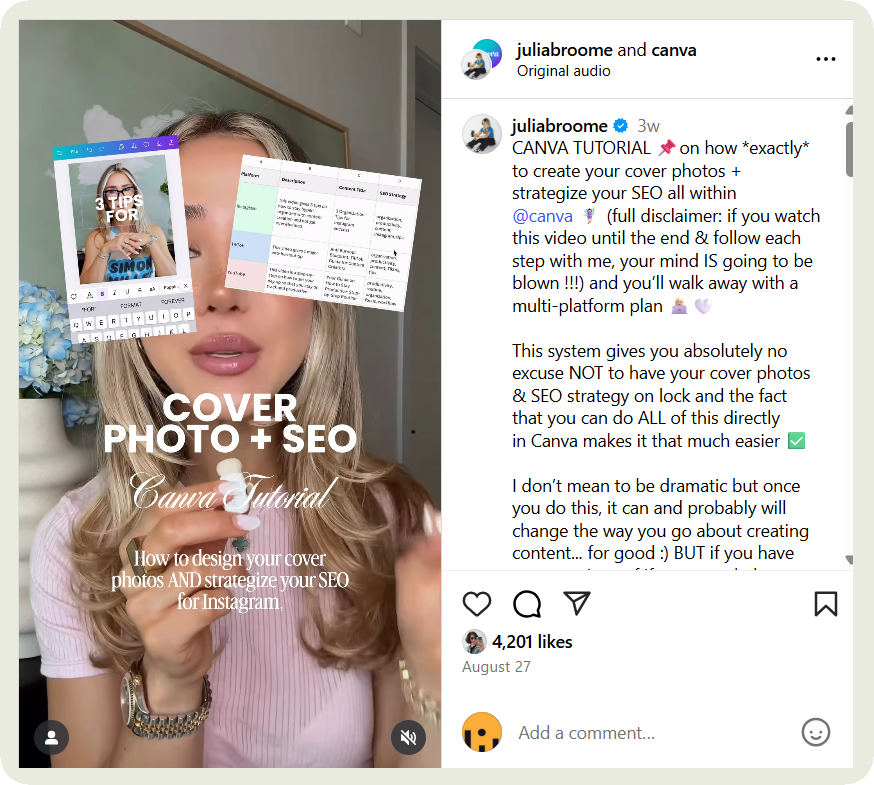
By tracking these patterns, I can figure out which creators actually drive engagement, what kind of collabs resonate with our shared audience, and where the gaps are.
Anticipate product launches or strategy shifts
Is your competitor going to launch some new AI features? Or are they going to pivot to promoting a specific use case more?
These are the kinds of insights a competitor analysis can reveal. By looking at their recent product-related content on Instagram, you can spot subtle signals — teaser posts, sudden emphasis on a feature, or repeated messaging around a new theme. Those patterns often hint at what’s coming next.
Catching these shifts early helps adjust messaging, double down on differentiators, or even time your own campaigns to ride the same wave.
For example, looking at Notion’s profile, you can see the emphasis on Make With Notion.
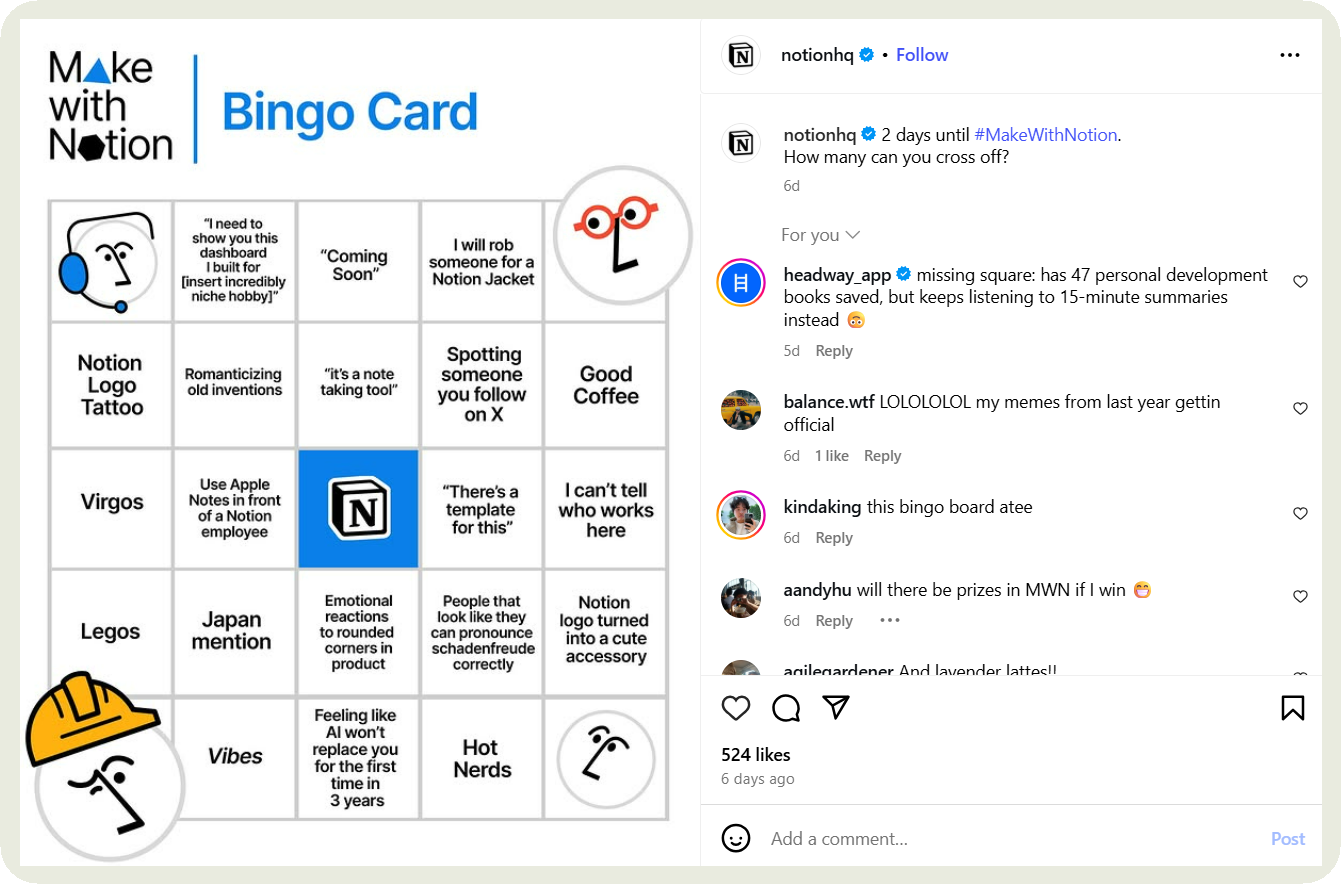
Types of Instagram competitors to analyze
There are three kinds of competitors you can include in your analysis.
- Direct competitors: These are brands that offer the same products or services and target the same audience. Their strategies are the most relevant because they compete head-to-head for customer attention and sales.
For example, two skincare brands targeting Gen Z consumers with affordable products are direct competitors.
- Indirect competitors: These brands don’t sell the exact same product but still compete for the same audience’s time, attention, and wallet.
For instance, a wellness influencer or a lifestyle brand might not sell skincare, but they could influence how that audience spends and which trends they follow.
- Aspirational competitors: These are the leaders in the industry or even outside of it who set the benchmark for excellence. Pay close attention to the brands your target audience mentions repeatedly.
For example, a niche skincare startup may see Glossier or Fenty Beauty as aspirational competitors. They aren’t direct rivals yet, but these brands set the bar when it comes to branding, community building, and creative content.
How to find your competitors on Instagram
If you’re a new brand or new to competitor Instagram page analysis, here are five methods to find your Instagram competitors.
- Hashtag research: Use industry-specific hashtags to discover competitors. For example, #skincareproducts and #skincareroutine to see the brands popping up in the top posts.
- Suggested accounts: Go to a competitor profile you know and then click the suggested accounts feature. You’ll find a list of profiles you can include in your competitor audit.
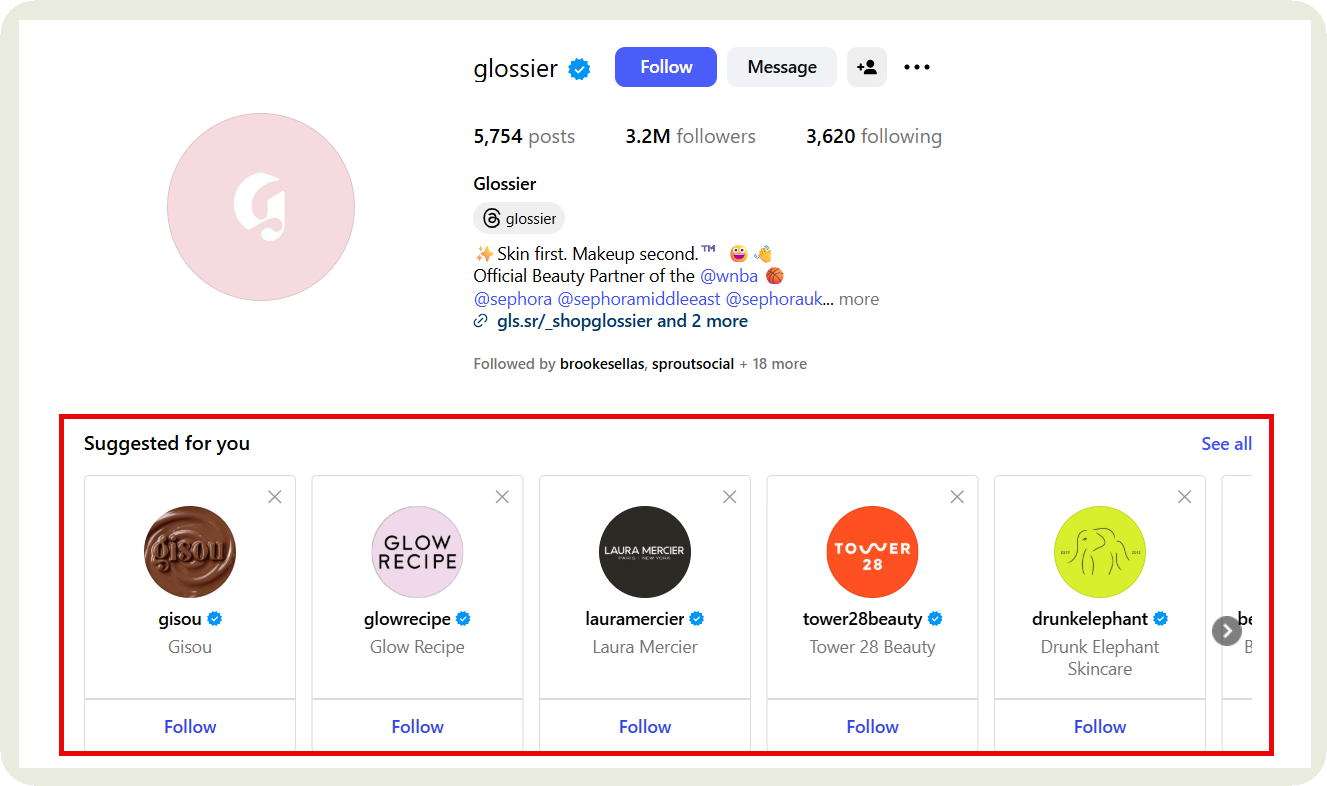
- Influencer and partnership research: Check which brands are tagged or mentioned by influencers in your industry. If a creator you want to work with already partners with certain brands, those brands might be your competitors.
- Google and cross-platform search: Search “top [industry] brands on Instagram” or check LinkedIn/TikTok competitors and see if they’re active on Instagram.
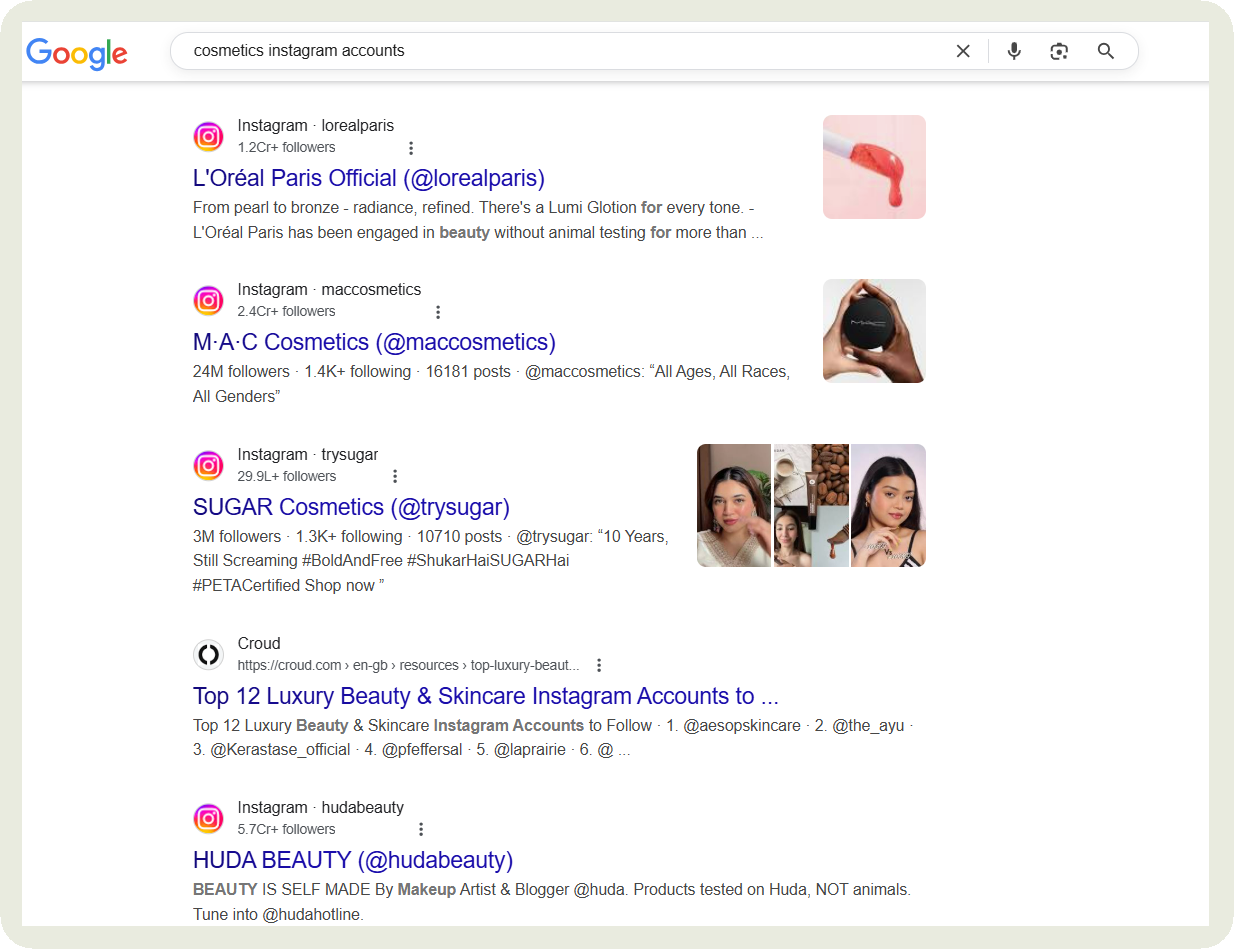
Key metrics to track while conducting Instagram competitive analysis
Metrics exactly show you how your performance stacks up against competitors. For easy tracking, I have divided social media metrics into three categories. Let’s go through each.
Engagement metrics
- Total engagement: The combined number of likes, comments, shares, and saves. It shows the overall pull of a competitor’s content in raw numbers.
- Engagement rate by followers and reach: A percentage that puts engagement in context by comparing it against audience size or post reach. This makes it easier to benchmark fairly across brands of different scales.
Instead of manually calculating it, I get this data for my competitors on Socialinsider.
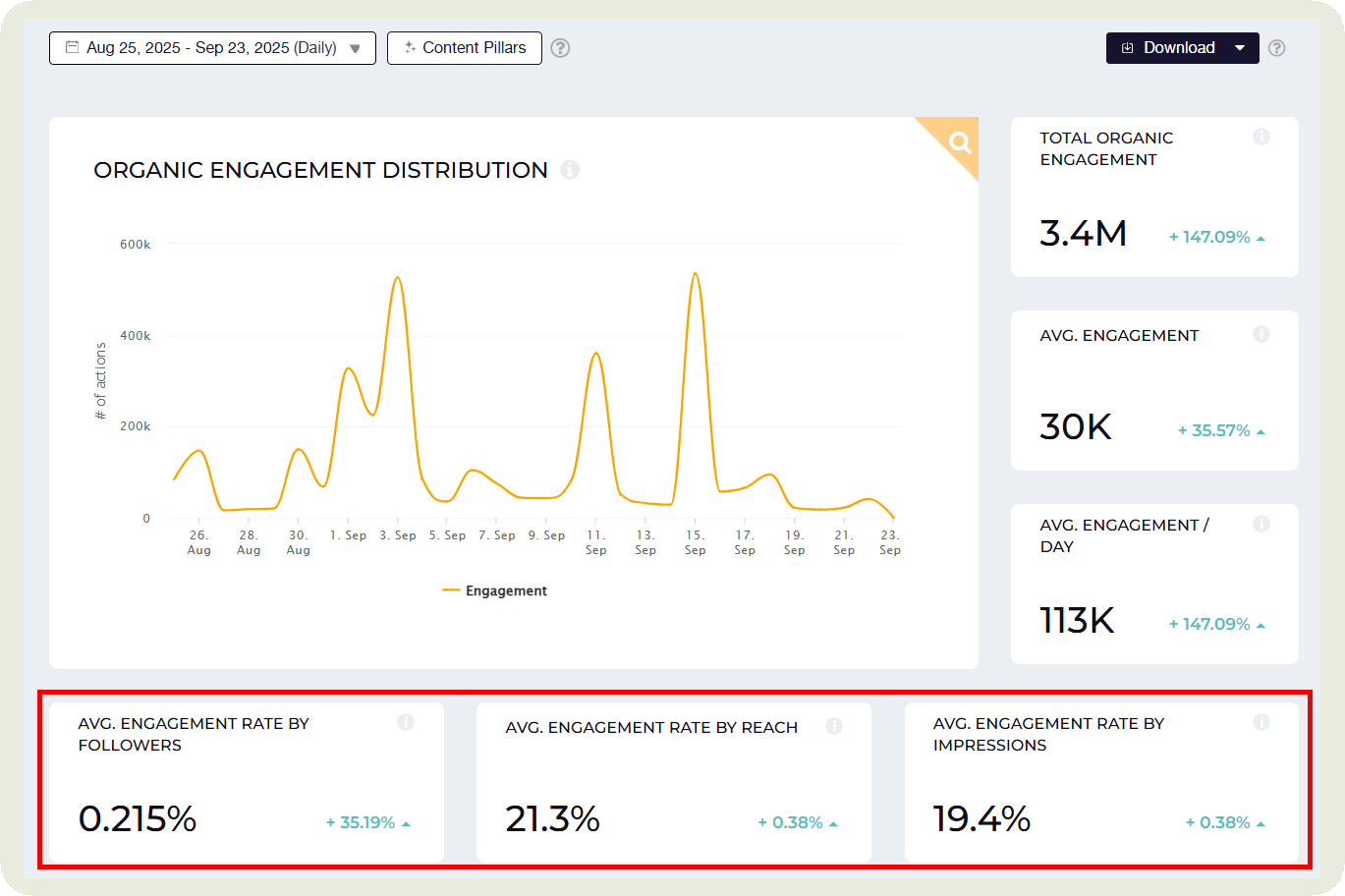
- Likes and comments: These are quick signals of audience interest. Likes highlight surface-level approval, while comments reveal deeper interaction and sentiment.
If you have run similar campaigns, let’s say Black Friday campaigns, you can compare these Instagram metrics for that period to see the kind of engagement their posts generated vs yours.
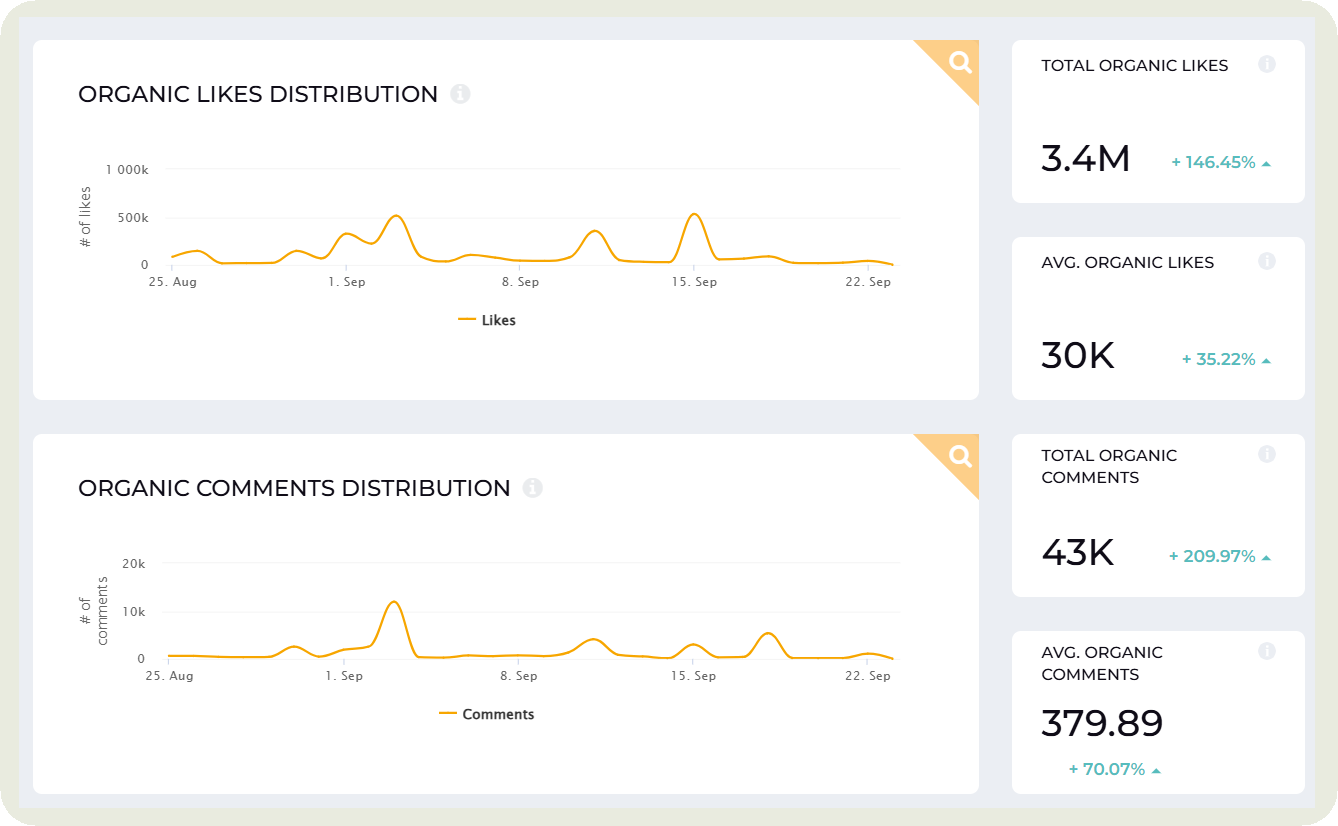
- Engagement by content pillars: This breaks down performance across themes like tutorials, product launches, or lifestyle posts. It shows which types of content consistently win attention for your competitors.
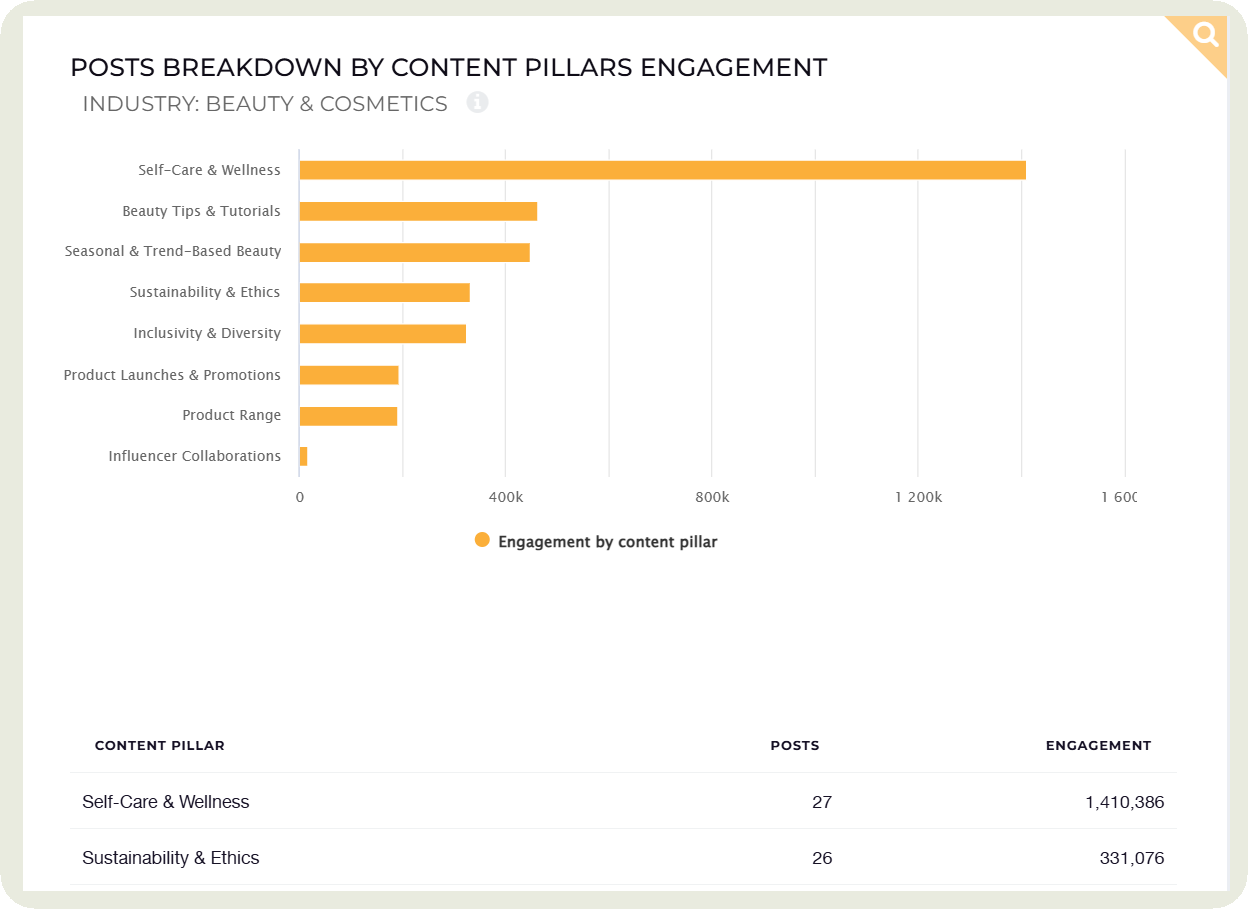
- Hashtag engagement: It tracks which hashtags help content get discovered and drive engagement. Useful for spotting trends and understanding how competitors expand their reach.
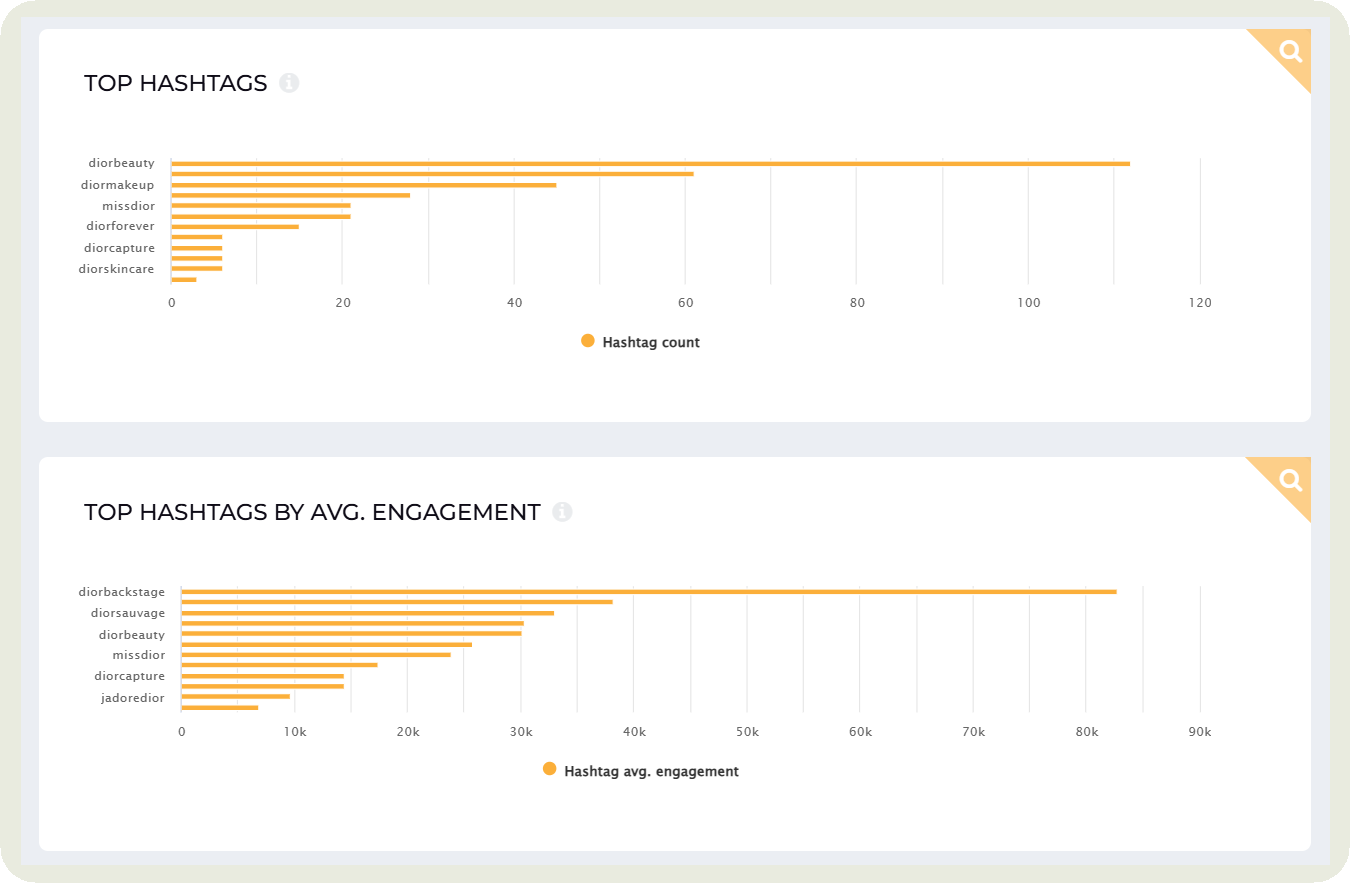
Growth metrics
- Follower growth rate: Shows how quickly a competitor is building their audience over time. A steady or rapid increase often signals effective campaigns or content strategies worth noting.
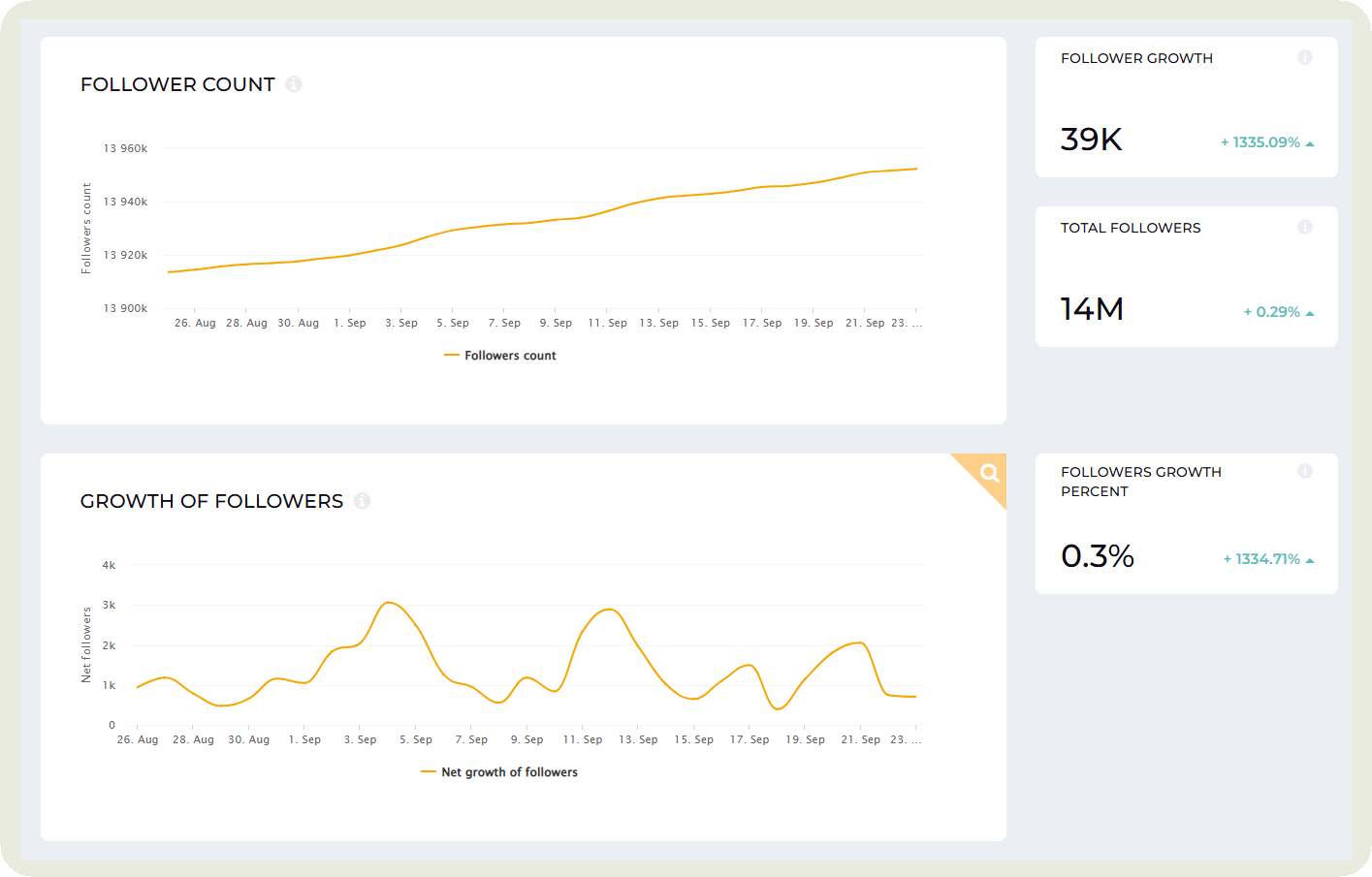
- Views: Measures how many times posts, Stories, or Reels are watched. This highlights the content formats and topics that capture attention beyond just likes and comments.
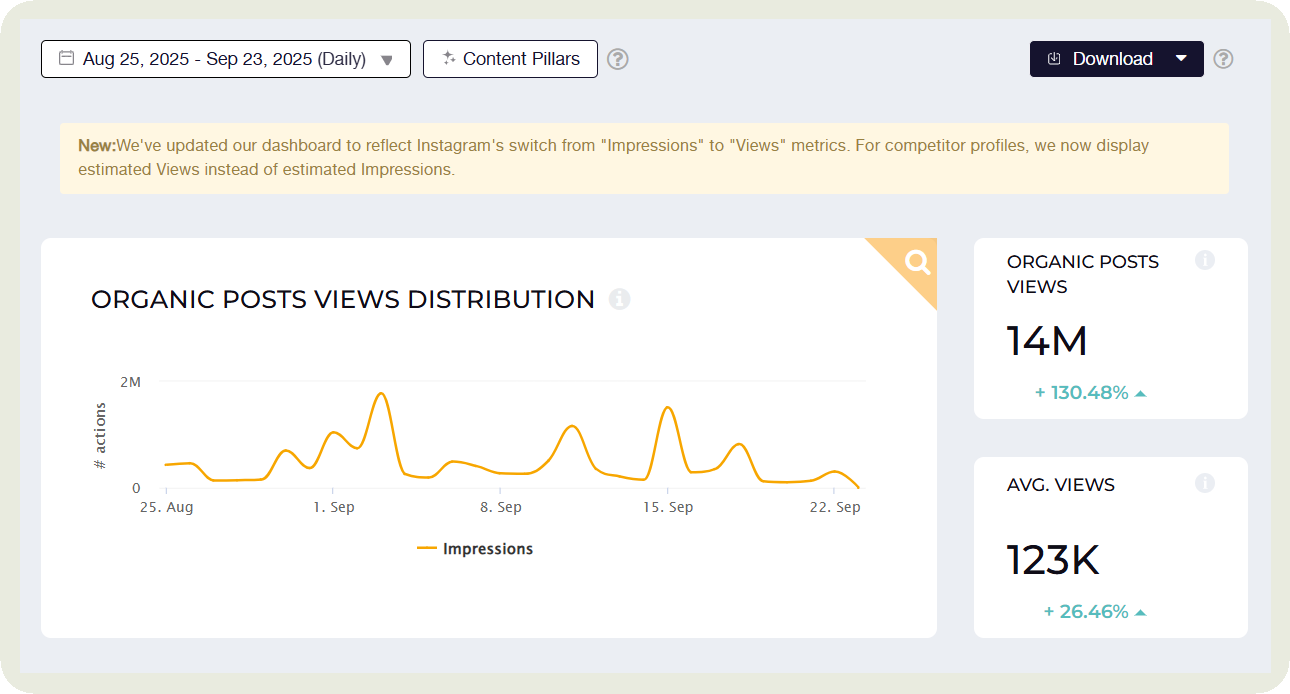
- Reach: Reveals the number of unique users who saw a competitor’s content. It’s a strong indicator of brand visibility and how far their message is spreading.
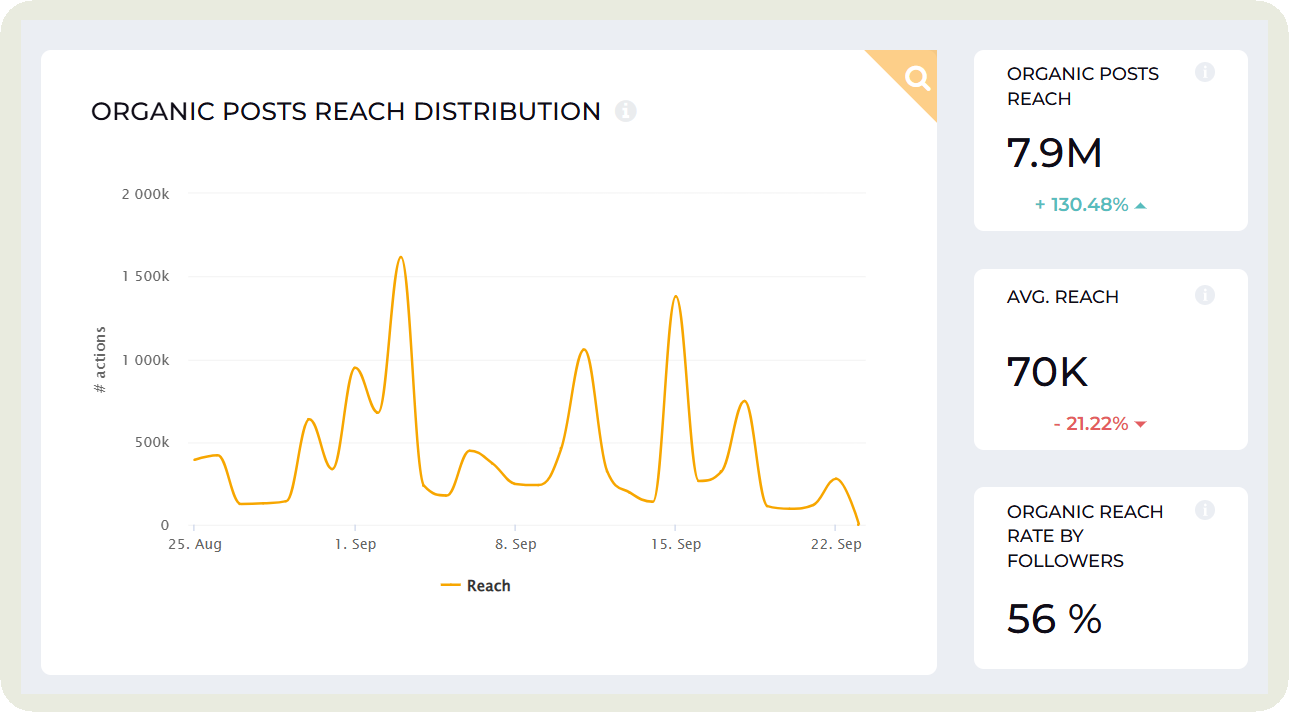
Content performance metrics
- Top and bottom performing content: Highlights which posts generate the most and least engagement. Are all the top posts coming from the same pillar? Do they all follow a certain storytelling technique?
I generally use this to identify winning formats, themes, and creative choices, while also understanding what falls flat.
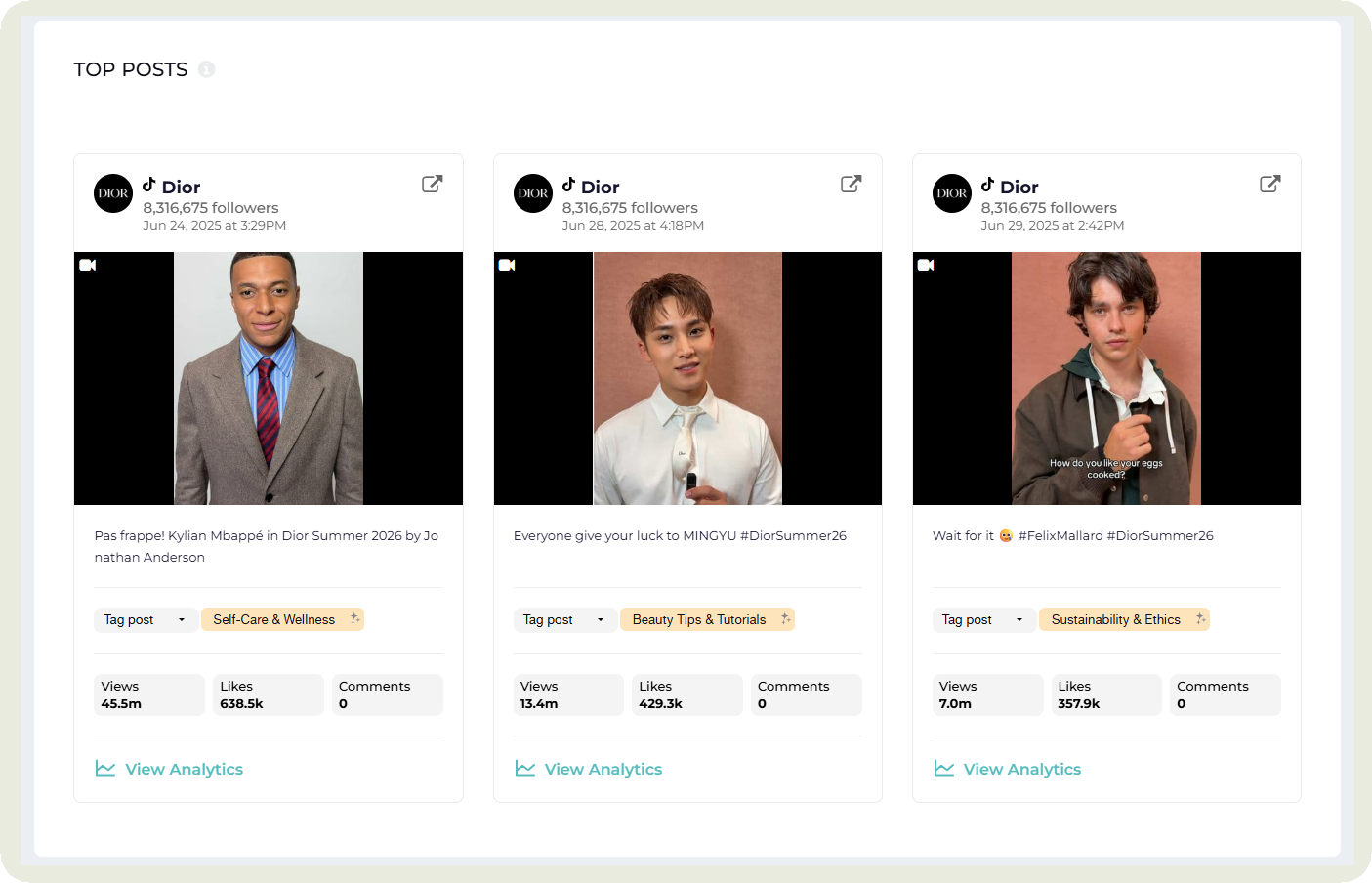
- Average posts per day: Tracks how often competitors publish content. It reveals their posting rhythm and can help you gauge whether consistency or volume plays a role in their growth.
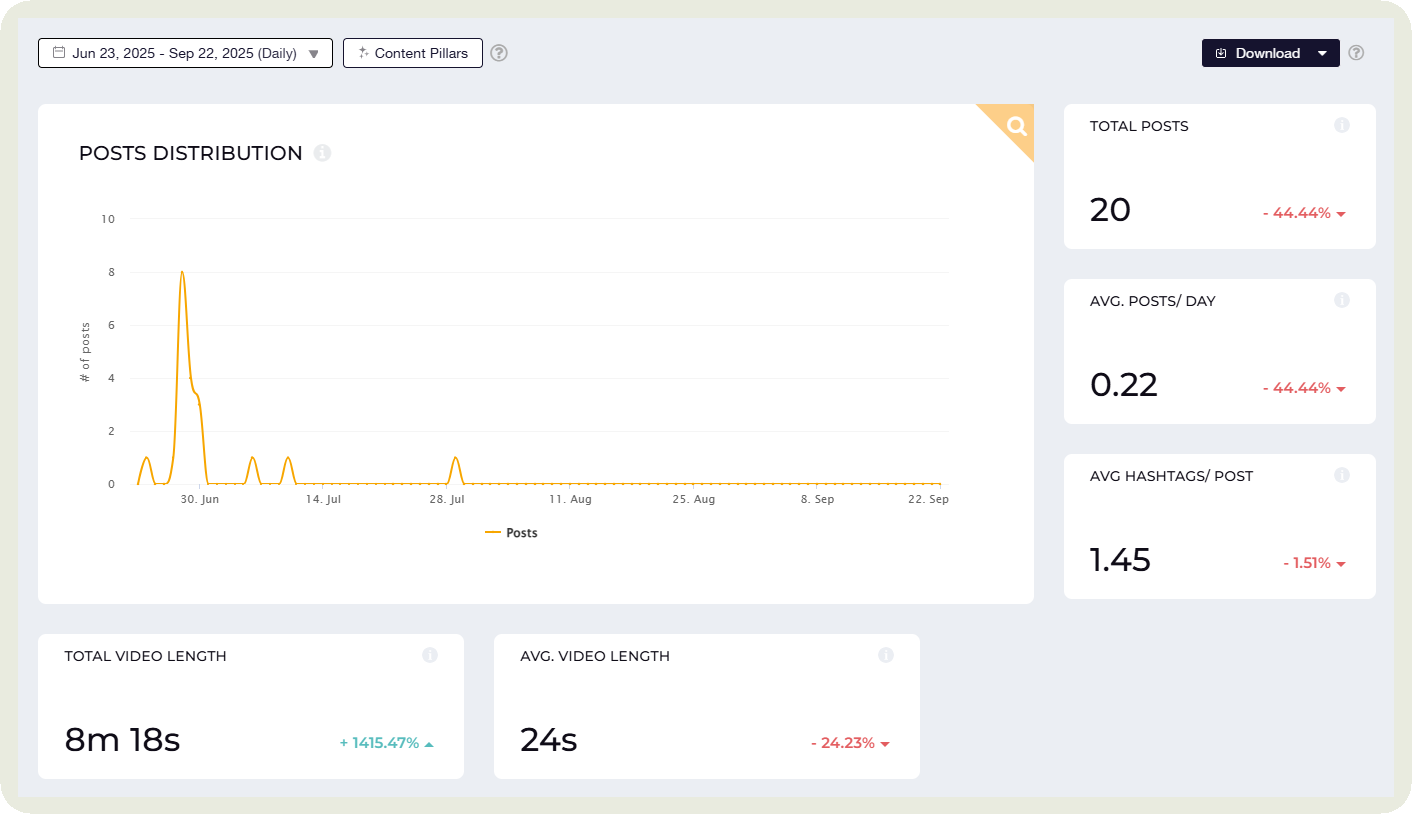
- Individual post performance: Look at how each piece of content performs on its own. You can even track campaign-specific posts or label certain posts to get an understanding of how they perform.
For example, I labeled each post of Dior Summer campaign to see the results they got.
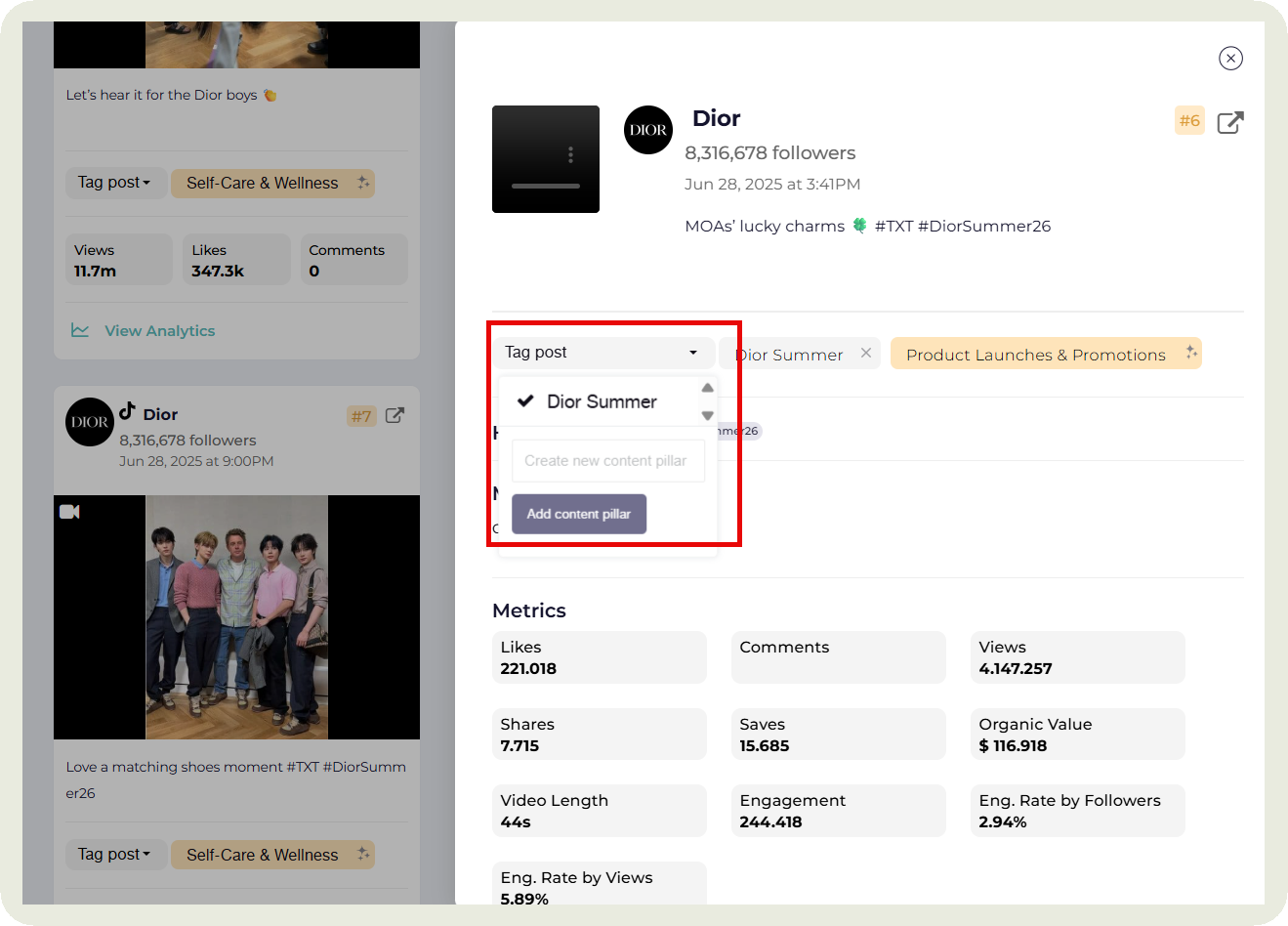
How to do an Instagram competitor analysis in 6 steps
Here’s a step-by-step guide we follow while analyzing competitors on Instagram.
Step 1: Define your goals and scope
Before diving into numbers, get clear on why you’re running an Instagram competitor analysis.
- Are you benchmarking overall performance to see where you stand?
- Testing new content formats to spark fresh ideas?
- Scouting influencer and partnership opportunities?
Your goals will shape every other step.
For example, if your goal is to improve engagement, pay close attention to your competitors’ content pillars and formats that consistently pull likes, comments, and saves. If your goal is growth, shift your lens toward follower trends, reach, and post frequency.
Equally important is defining the scope. Instead of superficially reviewing 20 competitors, I’d go deep with a few (a maximum of 10) who are most relevant to your audience and market.
Step 2: Analyze content themes and content formats
This is one of the most crucial steps that will help you discover content opportunities and gaps. Here’s how to go about it.
Start by seeing the content format split for each competitor
You may be tempted to capitalize on Reels because they are quite popular on Instagram.
But what if your audience loves carousels more?
One way to find that is by looking at which formats your competitors prioritize. I look at each competitor’s format split on Socialinsider and then see if common patterns emerge.
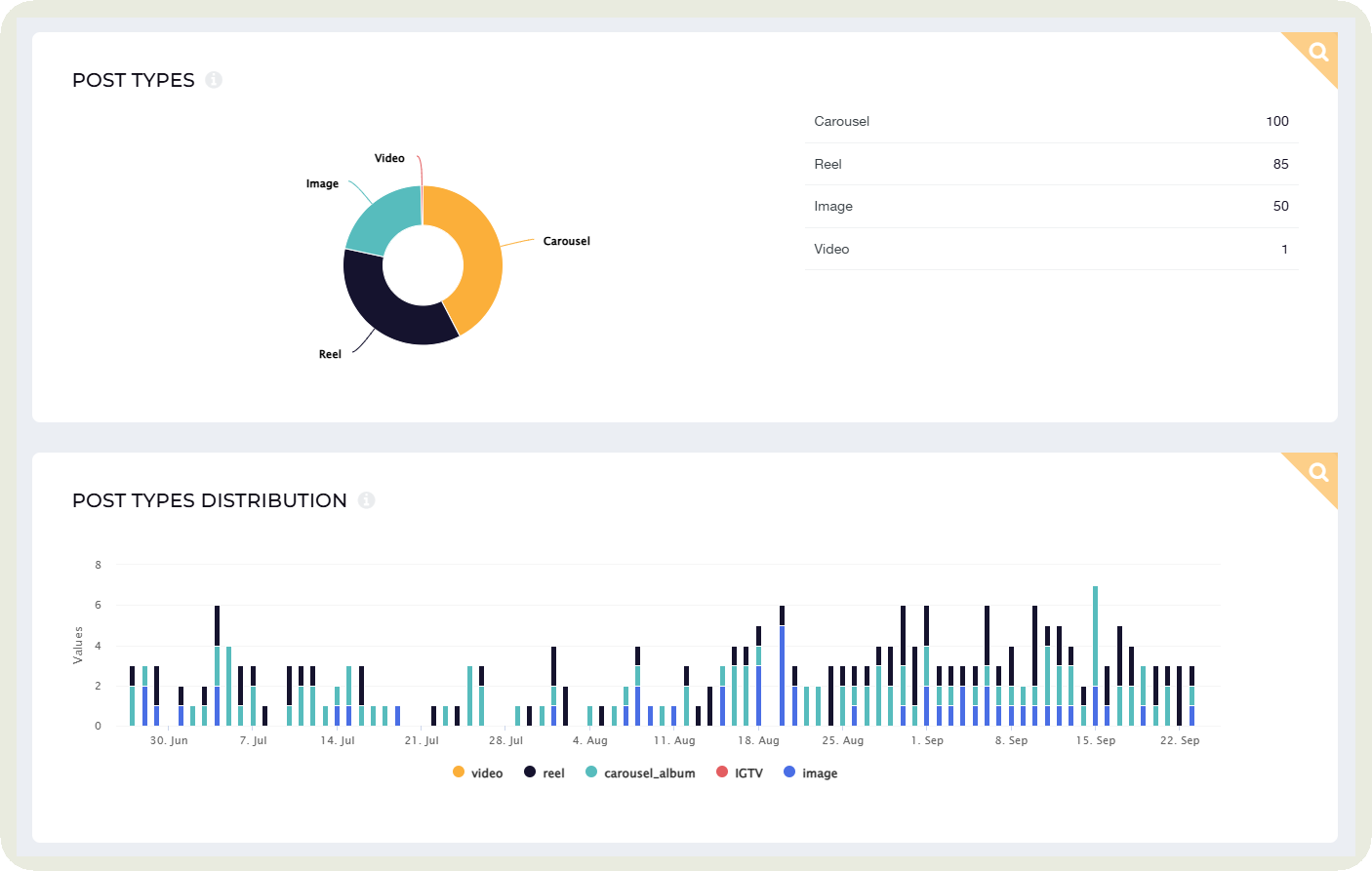
For example, if I find that everyone is focusing on carousels more and getting more engagement on those posts, it’s a sign I should experiment or double down on that format.
But if one competitor breaks the mold and dominates with Reels, that tells me there’s still space to differentiate. Either way, format splits reveal not just what’s popular, but what actually works in my niche.
Dig deep into the content pillars your competitors are focusing on
Every competitor will have a few content pillars they keep coming back to. It could be tutorials, behind-the-scenes, user stories, or humour.
When I scan competitors in a niche, I look for overlaps. In beauty, for instance, tips and tutorials almost always pop up as a common theme.
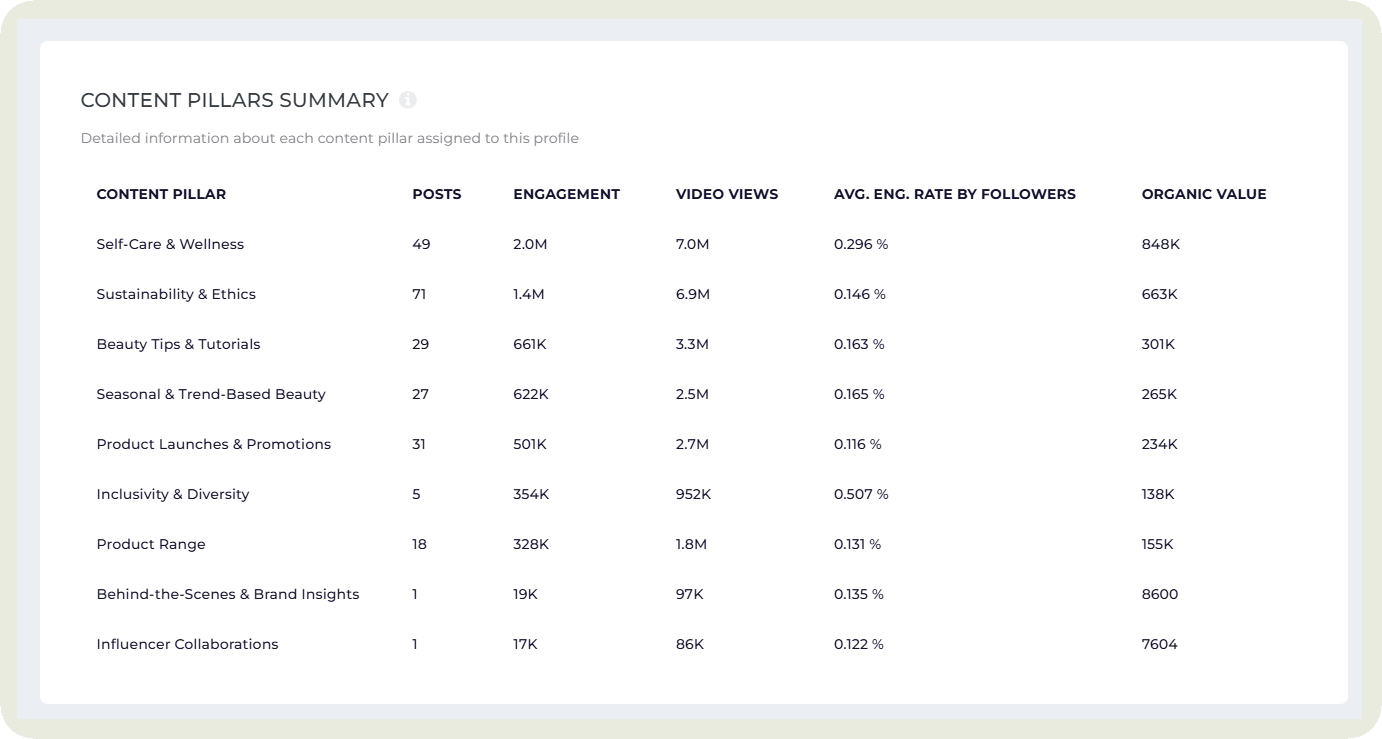
But the real gold isn’t just spotting what everyone’s doing; it’s noticing what they’re not doing.
Maybe no one’s highlighting customer success stories. Maybe Q&A-style content drives strong engagement, yet few brands prioritize it. By digging into content pillars this way, I uncover the gaps I can fill to stand out.
Analyze each format
I filter content by media type in Socialinsider to study each format in depth.
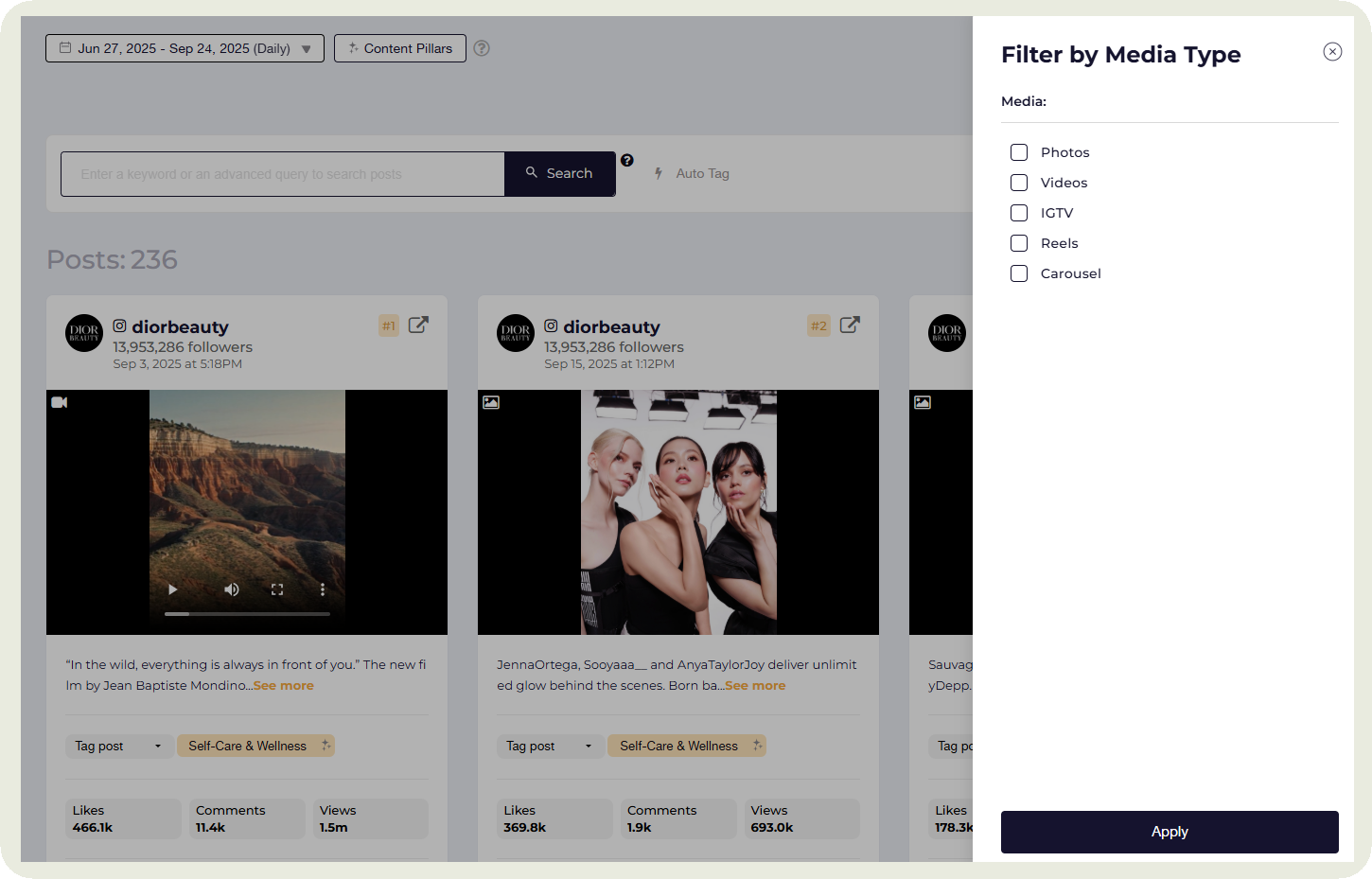
What I look at?
- Tone and voice: What kind of image are they creating with their tone? Is it playful, polished, educational, or aspirational?
- Visual style: Quick cuts and bold text for Reels, or clean, minimal designs for carousels?
- Hook strategy: How do they grab attention in the first 3 seconds of a Reel or the first slide of a carousel?
- Call-to-action: Are they driving saves, comments, clicks, or shares? Does this shift by format?
- Storytelling approach: Do they use step-by-step tutorials, behind-the-scenes snippets, or user-generated content?
This will help you refine strategy for each format.
Analyze their posting patterns
How often do competitors show up in your feed? Do they post daily, multiple times a week, or only when they have a big launch? And more importantly, does their engagement spike on certain days or at specific times?
If timing feels like a guessing game, this step clears the fog. In Socialinsider’s Contents tab, you can see not just when competitors post, but also when their audience responds the most.
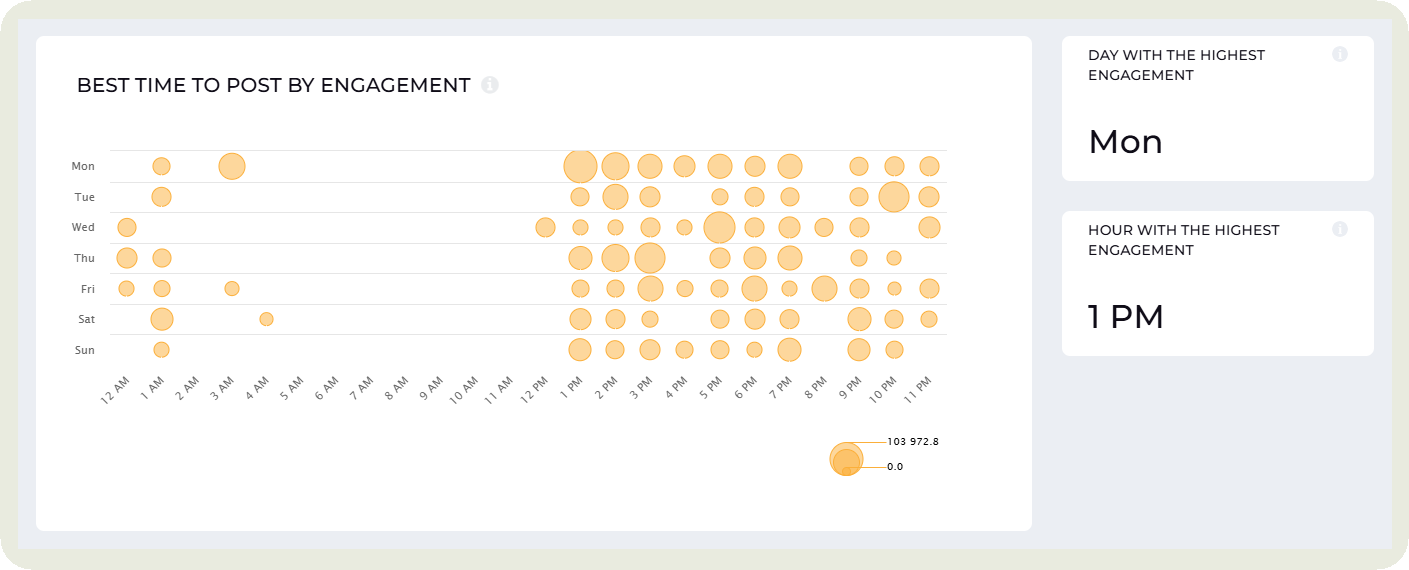
You can experiment with these timings and find the right slot for your audience.
See campaign-specific or seasonal performance
Whether it’s Christmas, Black Friday, or how to launch a new feature, you’re always on the lookout for inspiration.
I keep a close eye on what kind of content competitors share for specific campaigns or seasonal pushes. Do they lean on limited-time offers? Story takeovers? Reels packed with urgency? By tagging and analyzing these posts in Socialinsider, I can see which tactics actually moved the needle.
Step 3: Dig deep into audience and qualitative engagement data
While you can’t see their exact demographics, you can still gauge a competitor’s community by observing how they engage, respond, and build loyalty through content and interactions.
Here are three ways to do it.
- Don’t stop at likes. Take a look at their comments. What’s the common comment sentiment? Are people leaving meaningful feedback, asking questions, or just emojis?
One way I sort through posts with high comments is by using Socialinsider’s sorting feature.
- See how they respond to comments and tagged posts. Do they repost UGC? Which type of comments do they always respond to? What is their tone when addressing feedback and complaints?
This can give you an idea of how they manage relationships with their audience, the level of trust they’ve built, and the standards you should aim for (or exceed) in your own community interactions.
Georgia Gonzalez, social media manager at Penn State Outreach, talks about the same:
When it comes to competitor analysis, I pay close attention to community interaction. It’s not just about how often competitors post, but how they show up in the comments. Are they taking time to engage thoughtfully, or just liking responses? How do they handle criticism? Those signals reveal a lot about brand health and audience trust that numbers alone can’t capture.
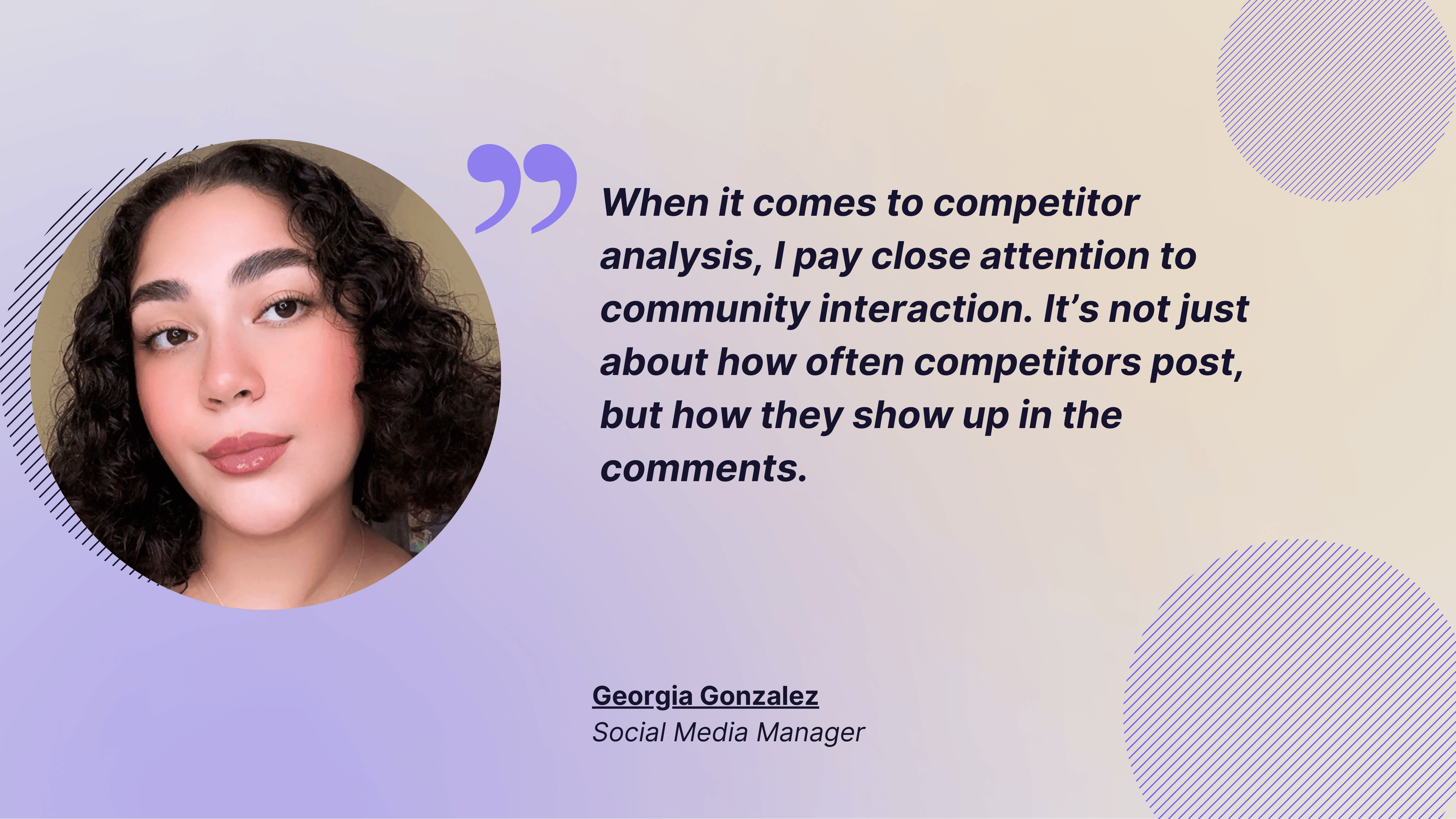
- Pay attention to how they engage their community. Do they initiate interactions by asking questions in Stories, organizing contests, or having polls?
Step 4: Gather data on partnerships and collaborations
46.7% marketers consider Instagram the most important influencer marketing platform for business.
If your goal is to boost brand awareness or hit a specific milestone through influencer marketing, the key is knowing which creators to partner with and how to get the most ROI from those partnerships.
Here’s how I use competitor analysis Instagram to get clarity on these fronts.
- Identify influencers and creators your competitors work with. Are they collaborating with micro-influencers, niche experts, or celebrity creators? What kind of engagement did these influencers bring?
- Analyze the partnership model. Do they run one-off partnerships or long-term ambassador programs? In case of the latter, you can track engagement for these campaigns.
For example, Dior Beauty collaborated with Sooyaa to launch The Dior Addict Tutu case.
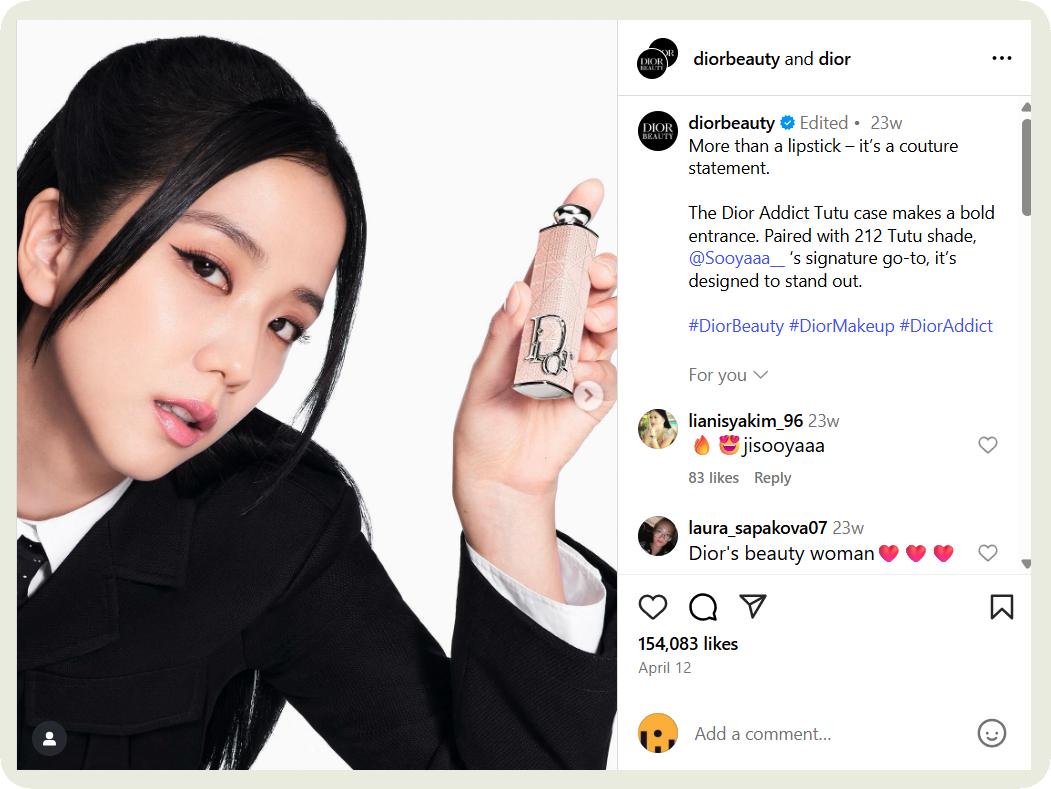
I tracked this collaboration through Socialinsider and tagged her posts to create a pillar.
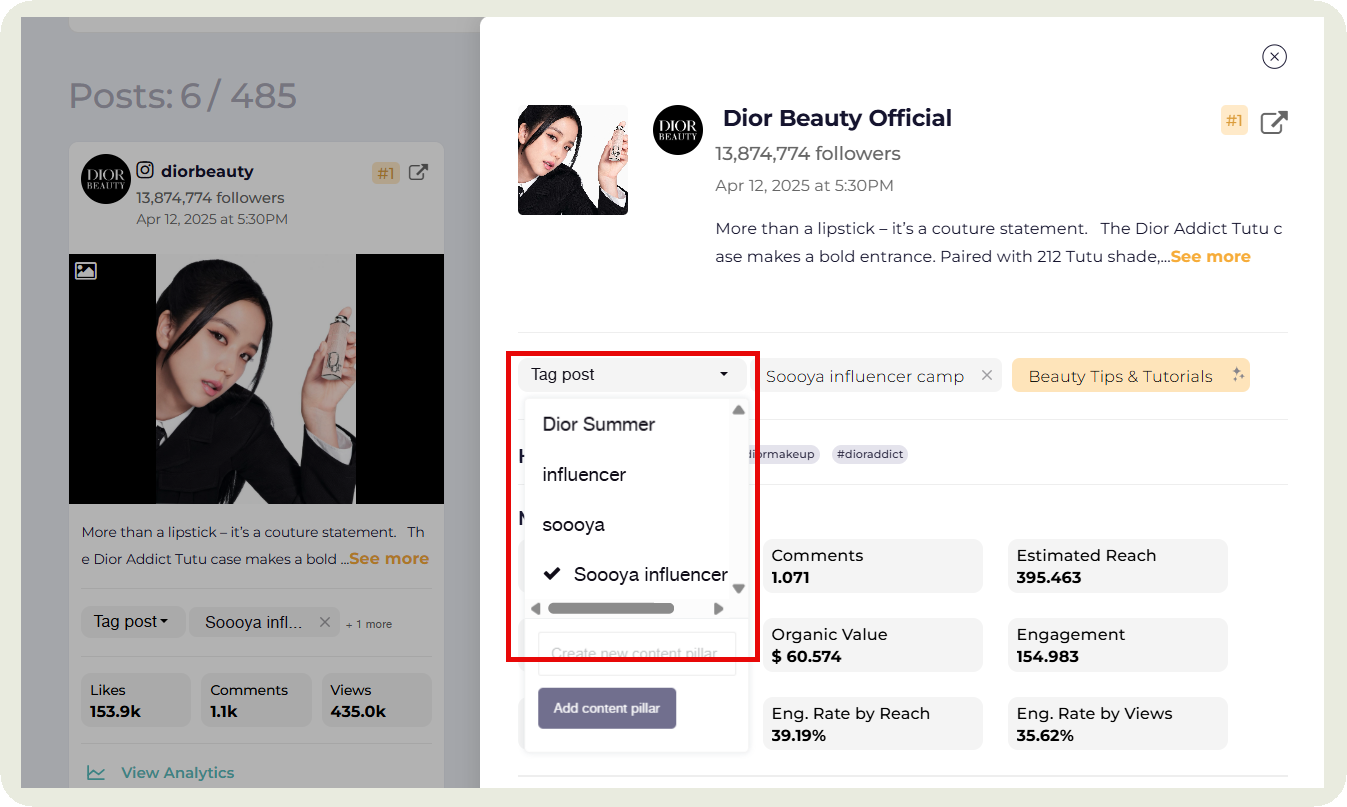
When I tracked the engagement per follower rate this collaboration generated, I found out that it exceeded all the other pillars they have been majorly working on.
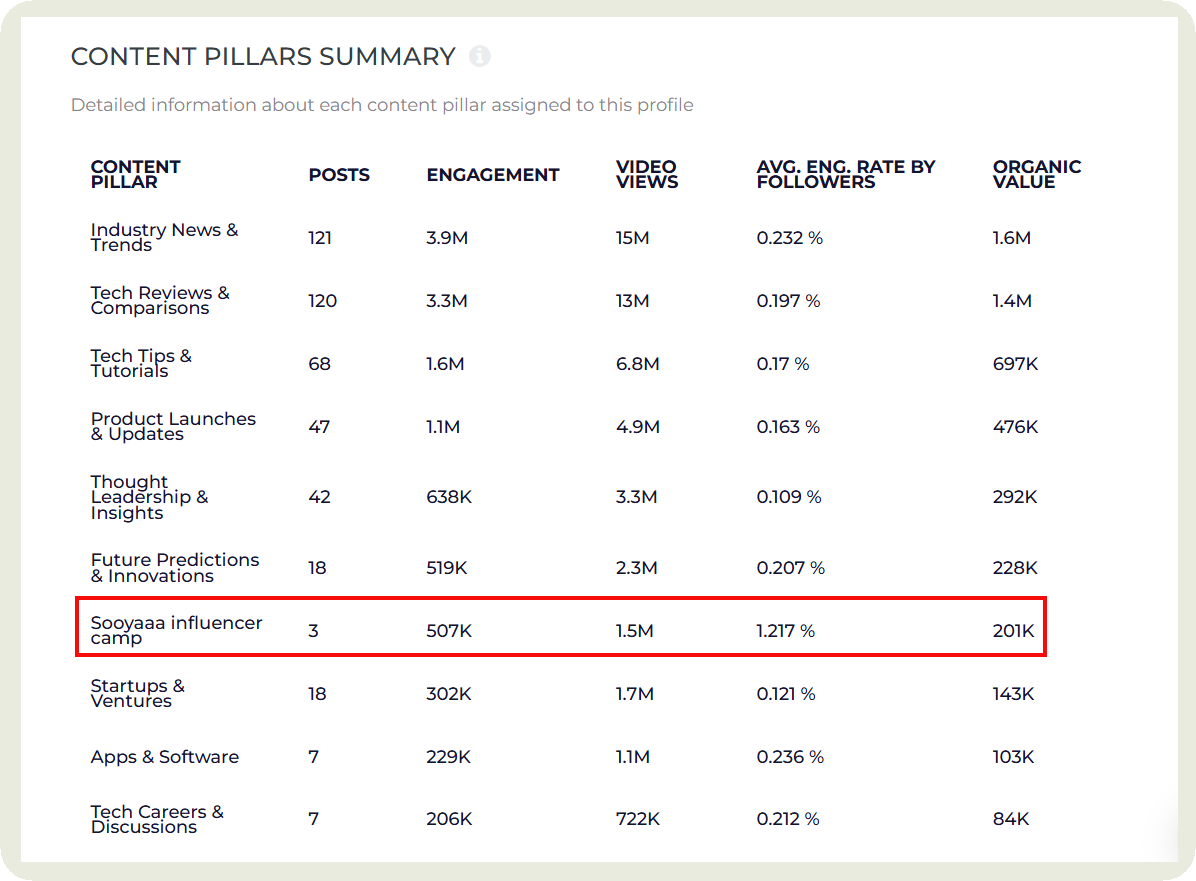
- Check mentions and tags beyond sponsored posts: Are influencers or customers tagging the brand even without a paid partnership? Organic mentions often signal real advocacy.
You can even dig deep into what encourages their audience to create content around the brand. Do they have some branded hashtags like #ShotoniPhone or organize contests like #StarbucksWhiteCupContest?
This can give you some inspiration on how to get UGC from your audience.
Step 5: Benchmark performance to see where you stand
You know how to do an individual-level competitor analysis. But what if you want to compare where you stand against 5 competitors?
Benchmarking features in third-party social media analytics tools make it easy. Here’s how to use the feature in Socialinsider:
- Add competitor profiles to your project
- Go to Benchmarks in the left menu
- Select Instagram and get a similar window below
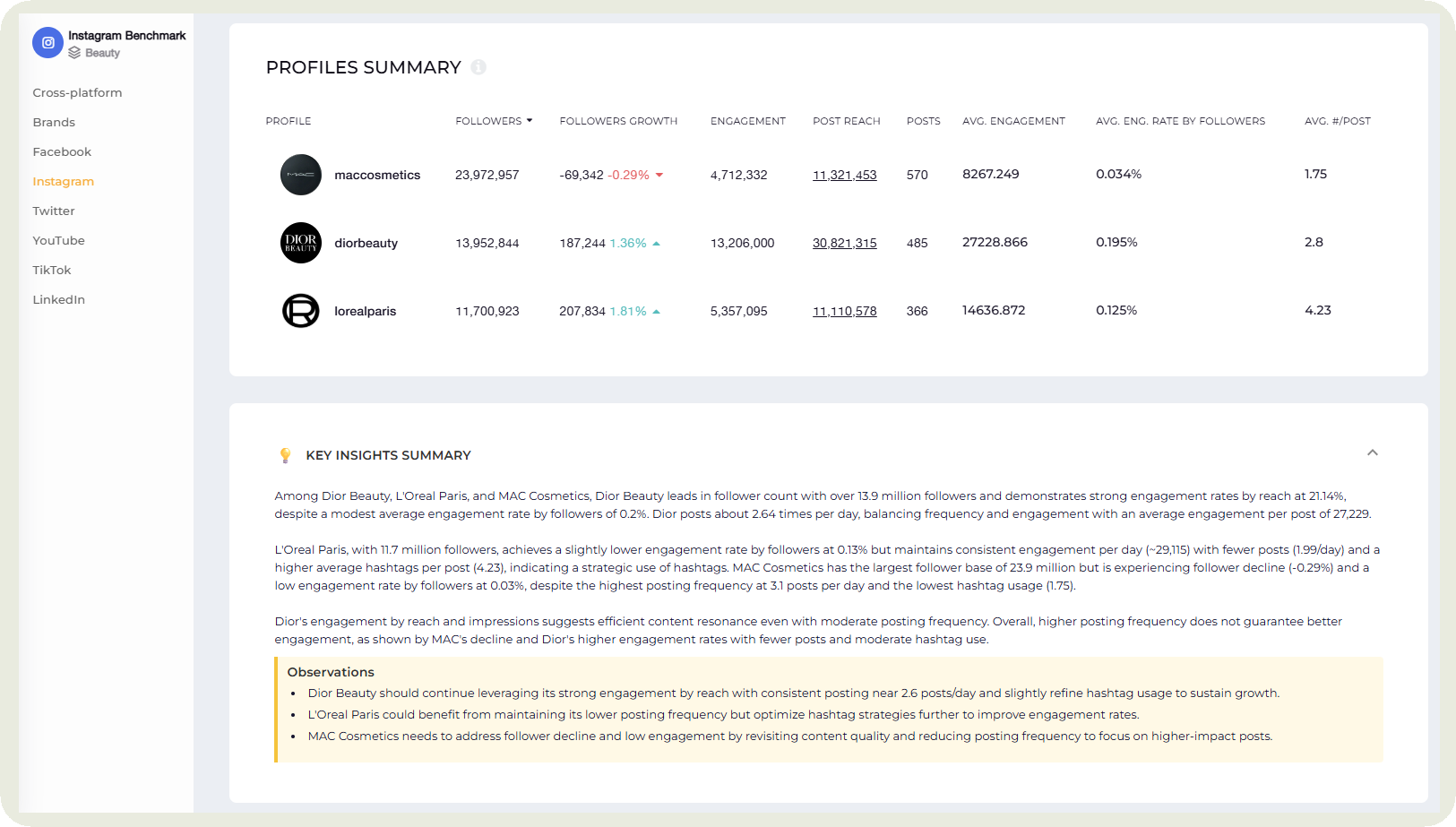
- Select the KPIs you want to measure through the right toggle menu
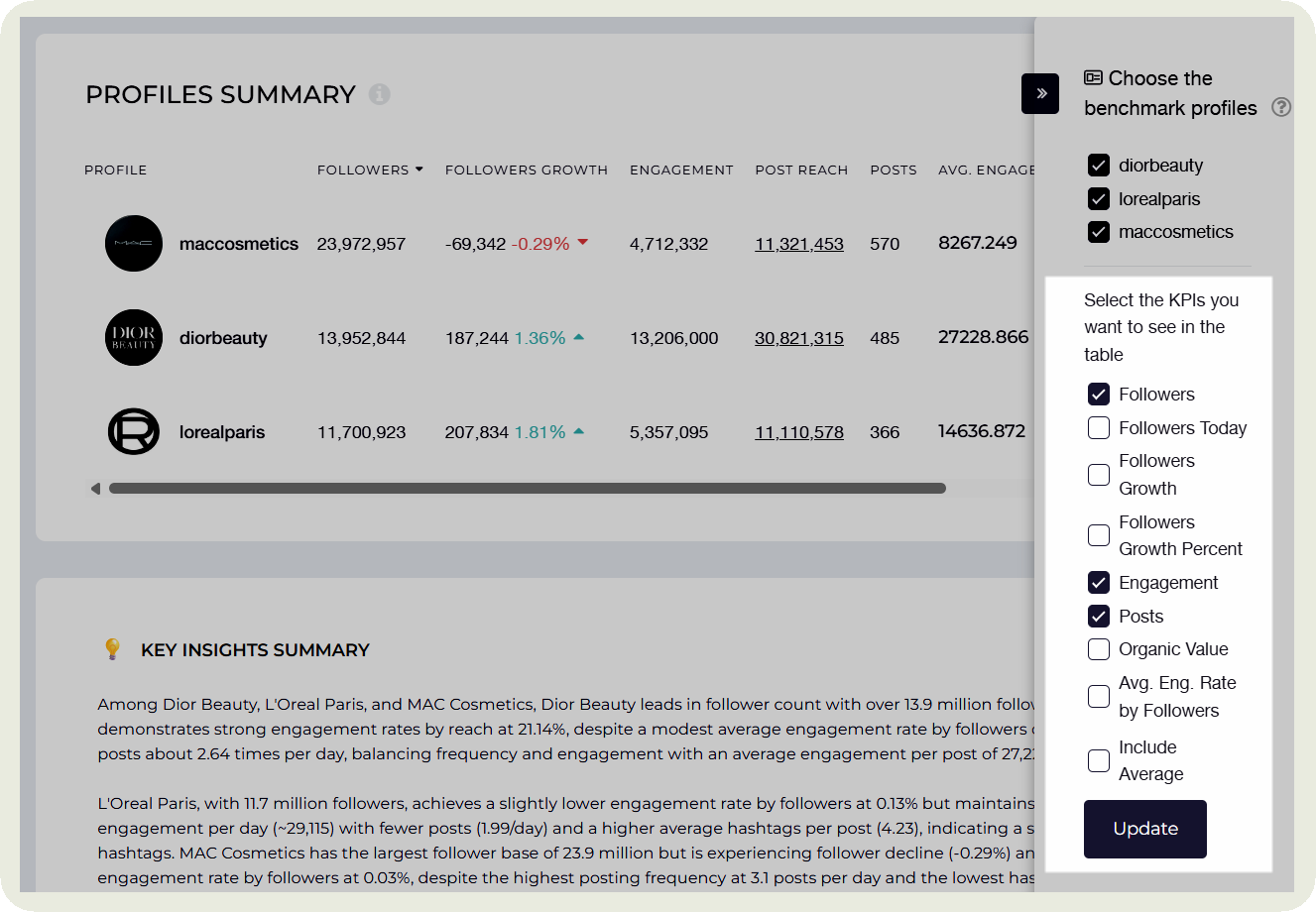
- Compare your performance
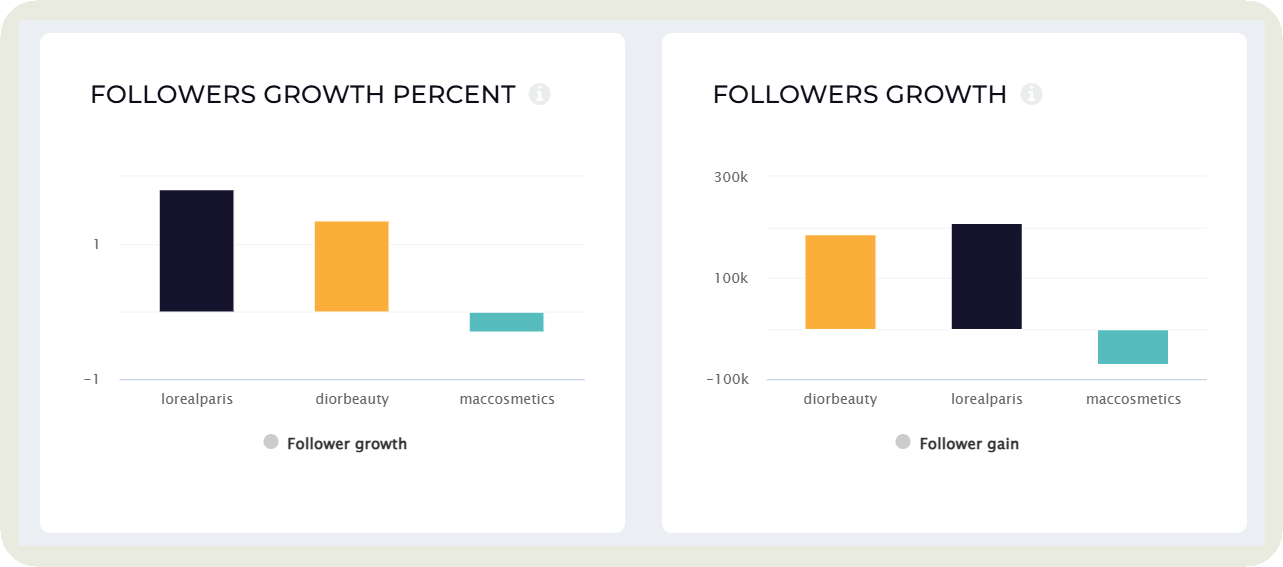
The best part is you can even compare your and your competitor’s performance with the industry performance in Socialinsider.
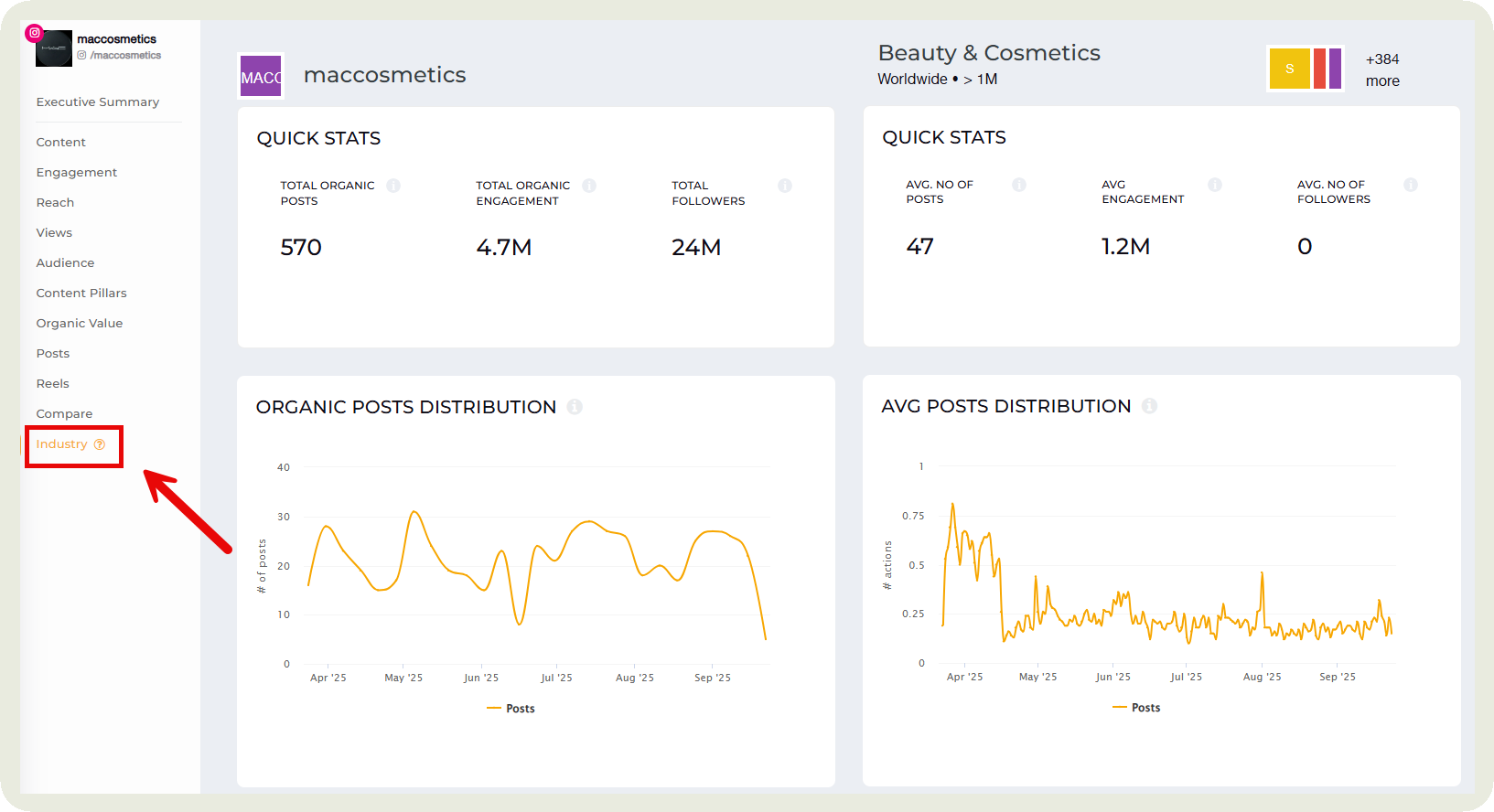
Step 6: Turn insights into action items
Now that you have the data, it’s time to put it to use. Take everything you’ve learned from the analysis and turn it into a plan your team can actually use.
That means pulling the key findings together, sharing them with the team, and deciding what to do next. Maybe it’s testing a new content format. Maybe it’s doubling down on a pillar that’s clearly winning. Or maybe it’s experimenting with influencer collaborations you hadn’t considered before.
Whatever the move, I recommend attaching KPIs to it. Otherwise, you’re just throwing ideas into the feed and hoping they stick. Setting clear metrics gives you a way to track whether the new approach is working or needs another tweak.
Also, make sure to conduct this analysis every few months or at least yearly to keep your strategies fresh and relevant.
Tom Miner, managing partner at Gold Miner Media, recommends the same:
Create Brands should be running competitive audits on a quarterly, semi-annual, or annual cadence. The factors impacting the frequency will include the size of the brand, resources at its disposal, and the competitiveness of its marketplace.
For instance, we know that social media changes quickly and some industries move faster than others. If you operate in a competitive niche that changes fast, a quarterly cadence can help you keep pace. If you're in a less noisy space and the pace of change happens over longer stretches of time, then an annual competitor analysis may be enough.
Best tools for Instagram competitor analysis
Instagram competitor analysis can eat up hours, sometimes even weeks. Rather than digging through posts one by one, I’d lean on Instagram analytics tools that do the heavy lifting. Here are three competitor analysis tools to add to your tech stack, each serving a different purpose.
Socialinsider for in-depth competitor analysis
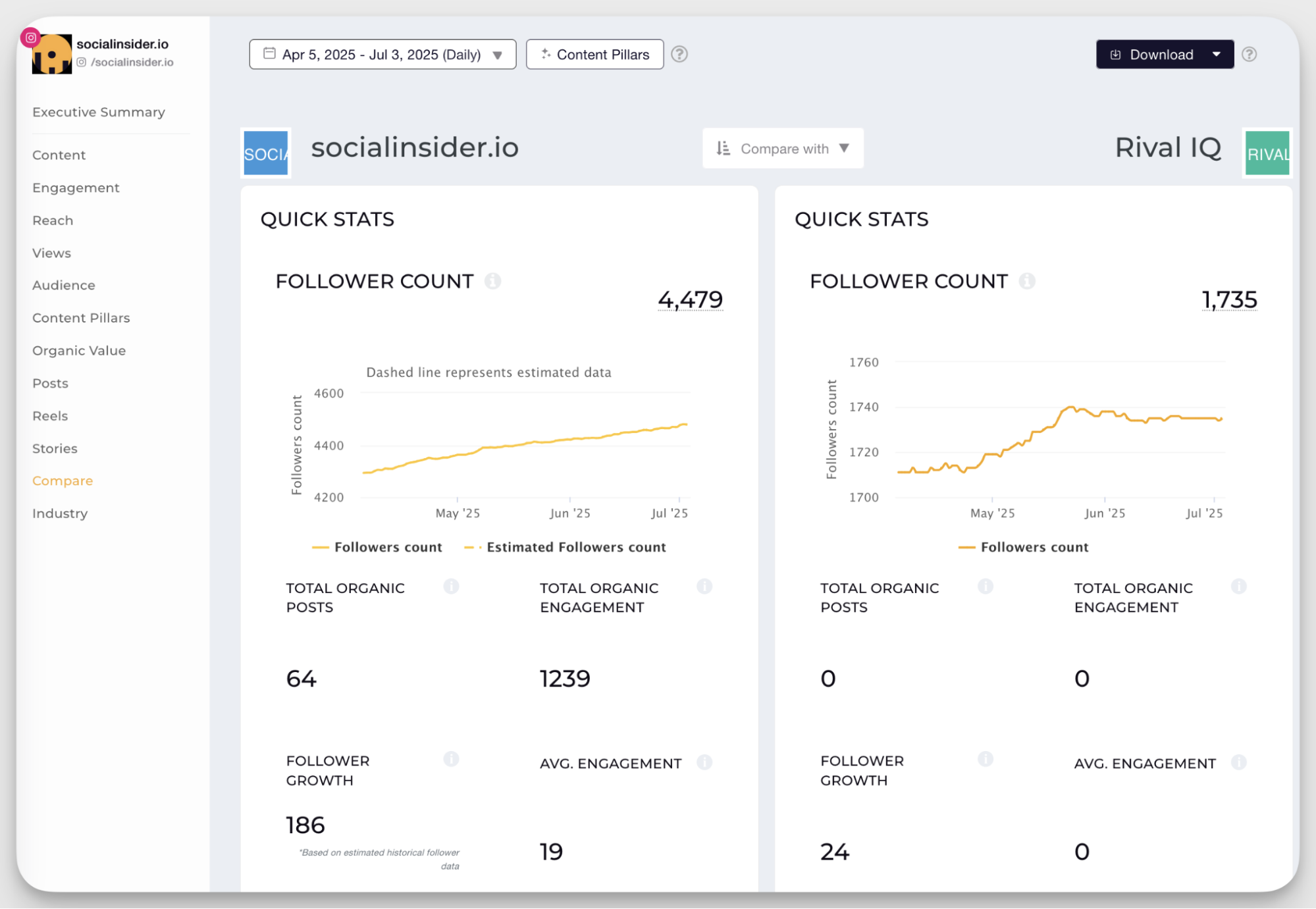
Socialinsider digs data far beyond surface-level metrics and delivers a complete picture of how competitors perform on Instagram. Our platform breaks down engagement across content pillars, formats, and campaigns, helping you see what’s posted and what actually works.
Its benchmarking features allow a side-by-side view of follower growth, engagement rates, posting frequency, and content mix, making it easier to spot strengths, weaknesses, and missed opportunities.
Users can also filter by media type to analyze Instagram account performance by format, tag seasonal or campaign-specific posts for deeper insights, and even track hashtag effectiveness. If you are a social media head or agency looking to build credibility, you can share automated reports and customizable dashboards to upper management or clients.
Mentionlytics for social listening
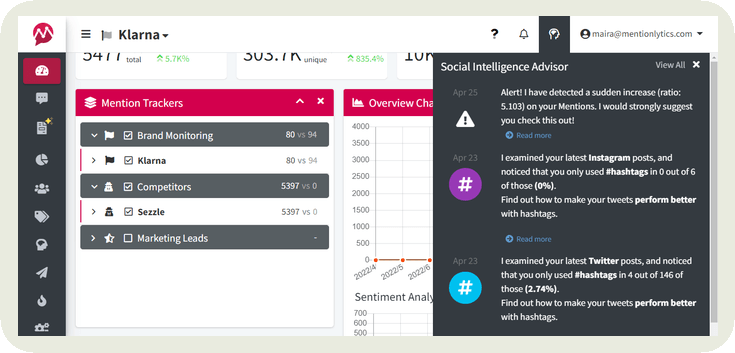
Mentionlytics helps brands uncover what audiences are saying about competitors across social media. The platform tracks mentions, brand sentiment, and trending conversations, giving a real-time view of how competitors are perceived in the market.
With multilingual monitoring, it captures brand discussions worldwide, helping businesses spot emerging issues or viral opportunities before they peak.
By mapping sentiment shifts alongside competitor campaigns, users can connect content strategies to audience reactions.
Phlanx for influencer and engagement auditing
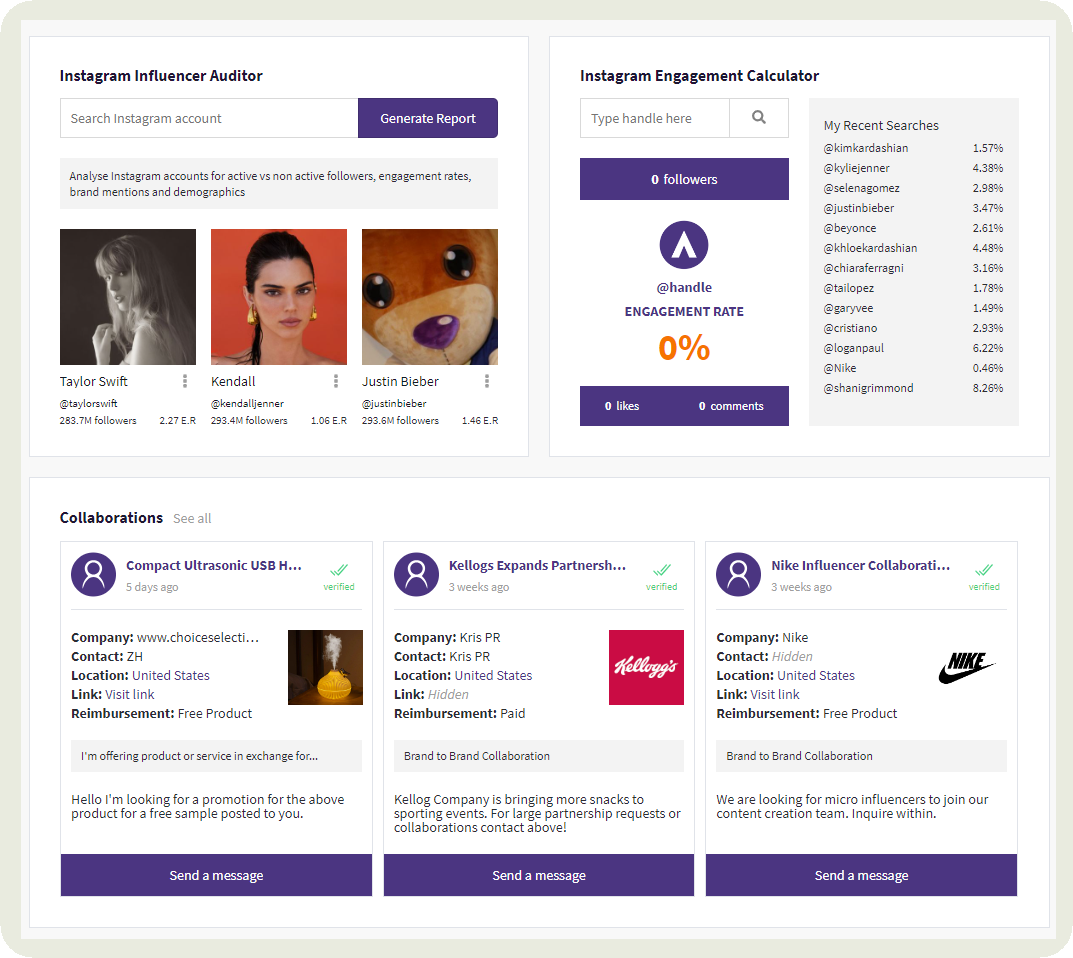
Phlanx specializes in evaluating influencer credibility, The platform provides detailed engagement calculators that reveal how authentic an influencer’s audience is and whether their interactions are organic or inflated.
By analyzing competitor partnerships, brands can see which influencers are delivering genuine results and which collaborations may be underperforming.
Phlanx also allows auditing of competitor accounts, offering transparency into follower quality, engagement ratios, and growth patterns. These competitor insights help identify red flags such as fake followers or sudden engagement drops.
Final thoughts
Gone are the days when you could post consistently on Instagram and be done with it. With new trends popping up every day, different formats to play with, and constantly changing audience preferences, you need to be on your toes.
That’s why we believe the brands that win need not be the loudest but the quickest to learn and adapt.
Instead of shooting arrows in the dark with your competitor analysis, use Socialinsider to see what’s working in your niche, spot gaps you can own, and build strategies with confidence. Activate your free trial now.
FAQs about Instagram competitor analysis
What are some best practices for Instagram competitive analysis?
Best practices for Instagram competitive analysis go beyond numbers. Look at tone, storytelling style, and how competitors position themselves in the market. Pay attention to patterns in collaborations, seasonal campaigns, and how they respond to their community. Keep your analysis ongoing rather than one-off, since trends shift quickly.
How often should businesses conduct Instagram competitive analysis?
The frequency of Instagram competitive analysis often depends on your industry. Fast-moving spaces like fashion, beauty, or tech may require monthly check-ins to keep pace with trends and audience shifts. Slower-changing industries can benefit from a quarterly deep dive instead. A good rule of thumb: the faster your industry evolves, the more often you should analyze competitors Instagram to stay ahead of market changes.
Analyze your competitors in seconds
Track & analyze your competitors and get top social media metrics and more!
You might also like
Improve your social media strategy with Socialinsider!
Use in-depth data to measure your social accounts’ performance, analyze competitors, and gain insights to improve your strategy.

